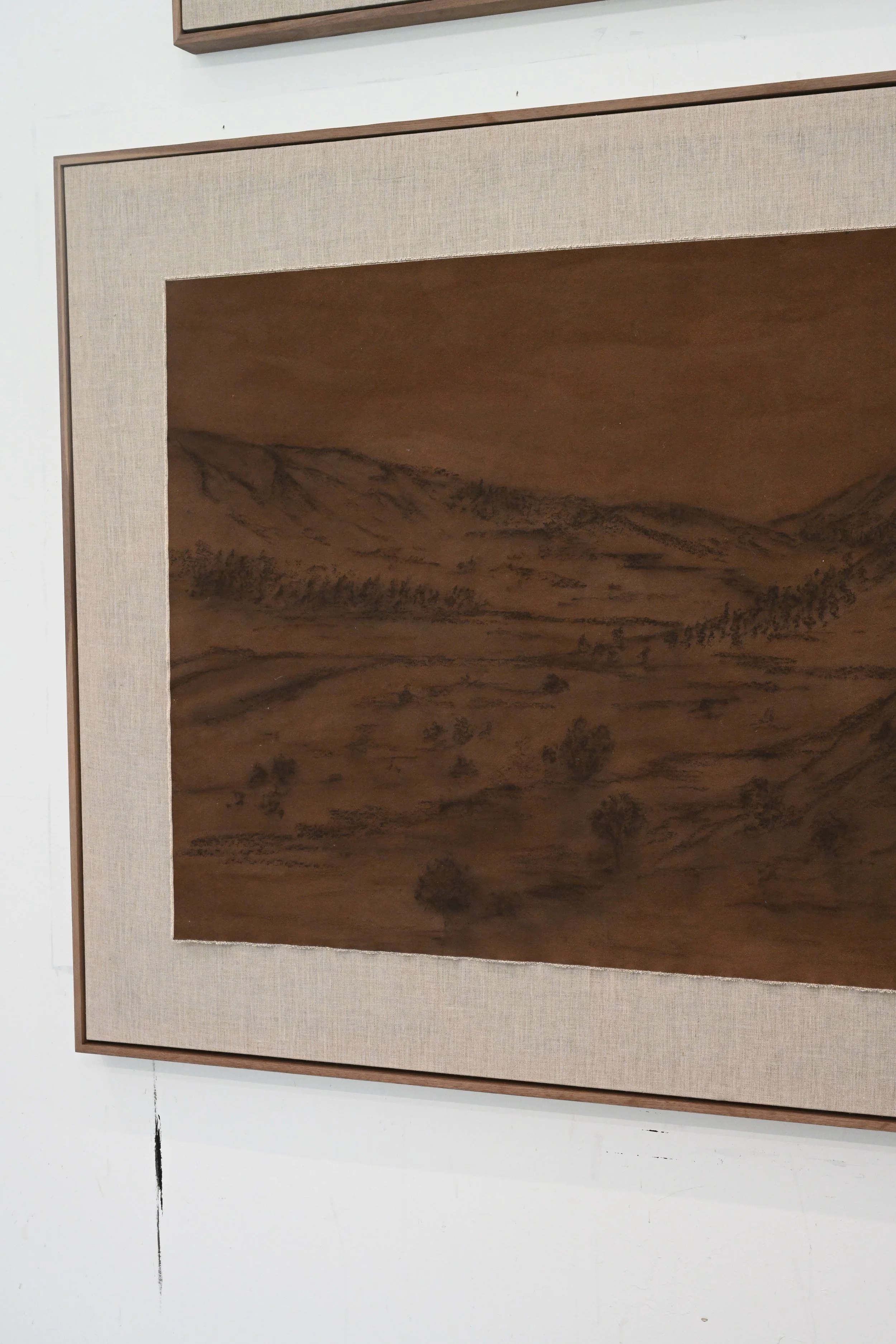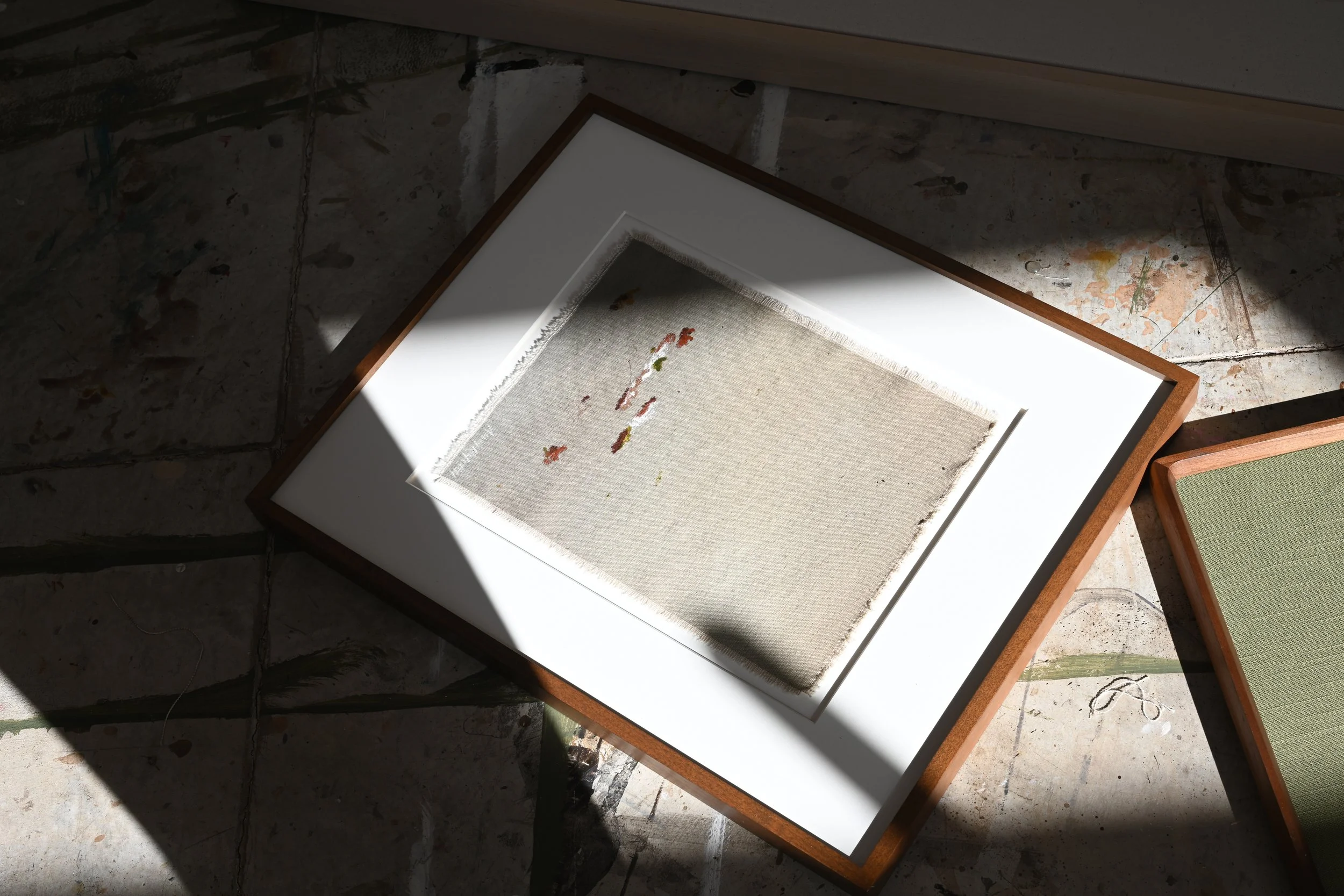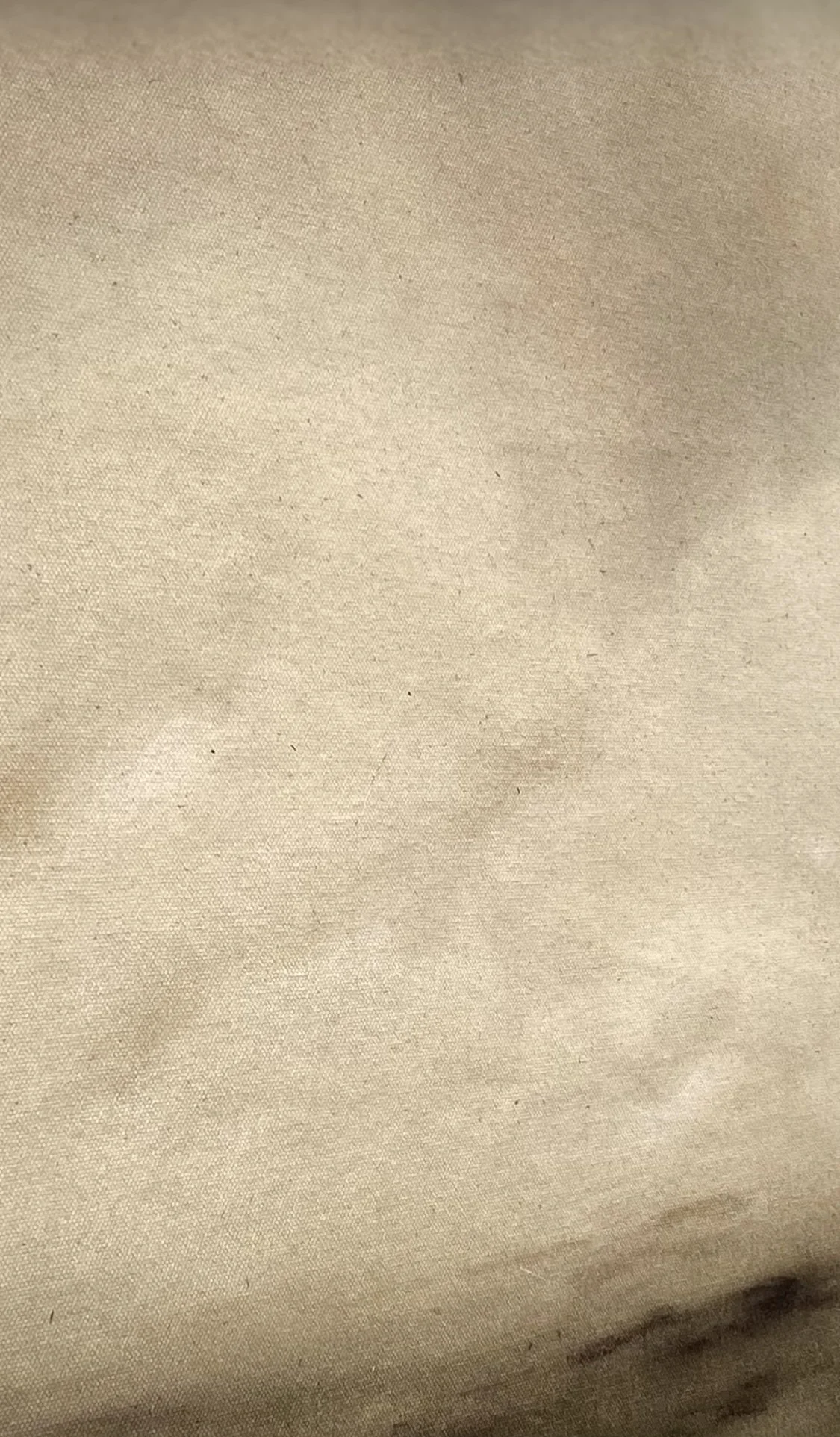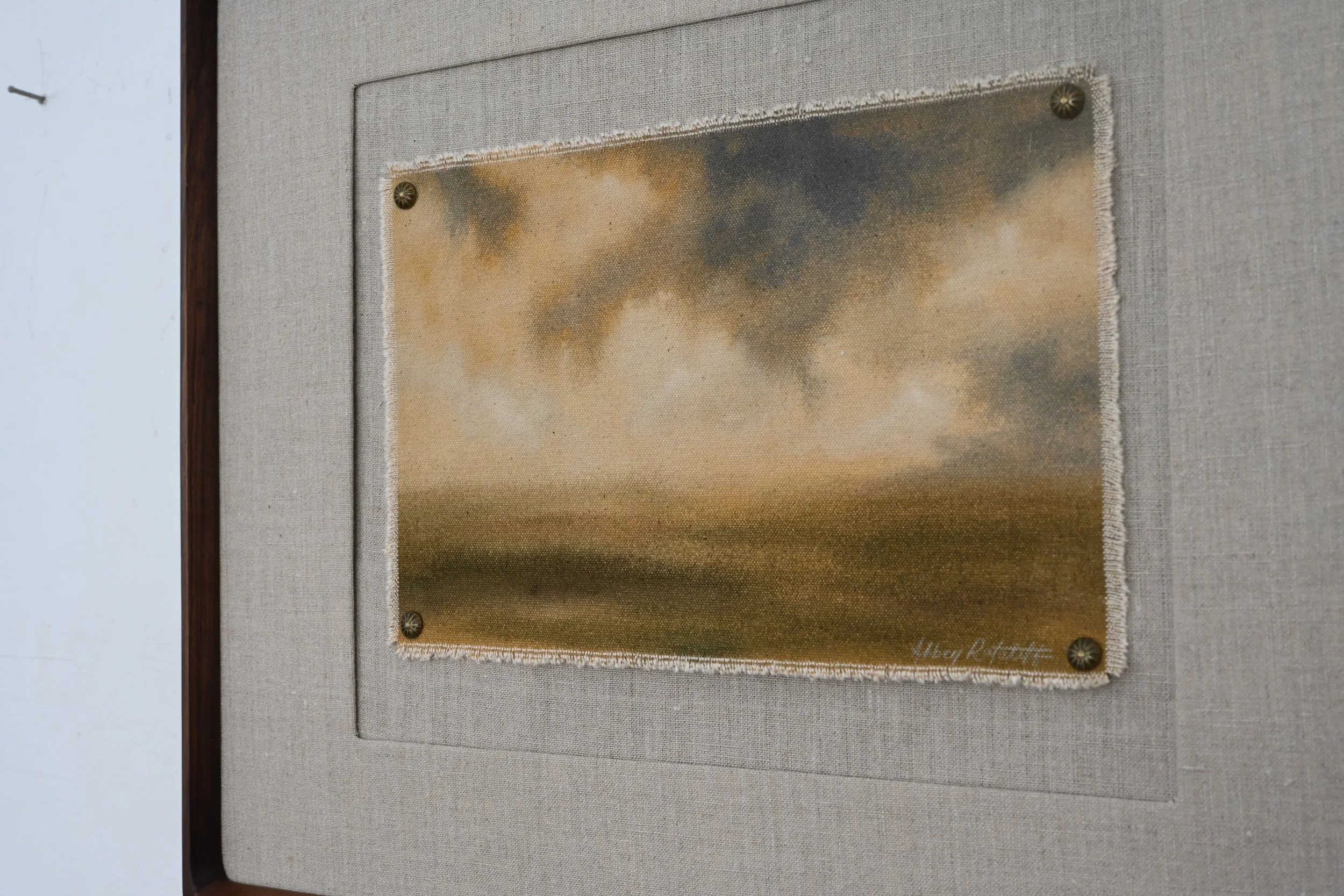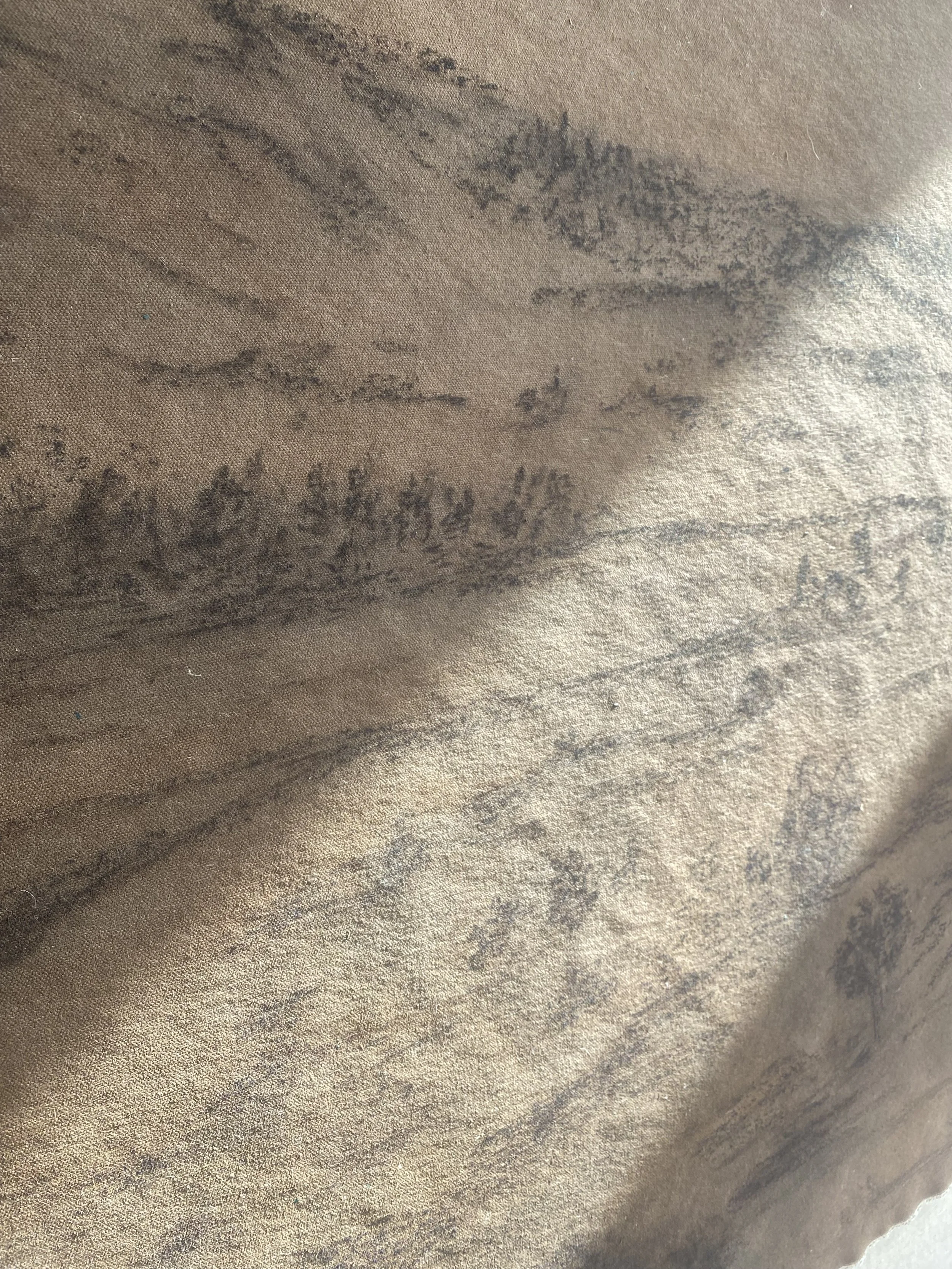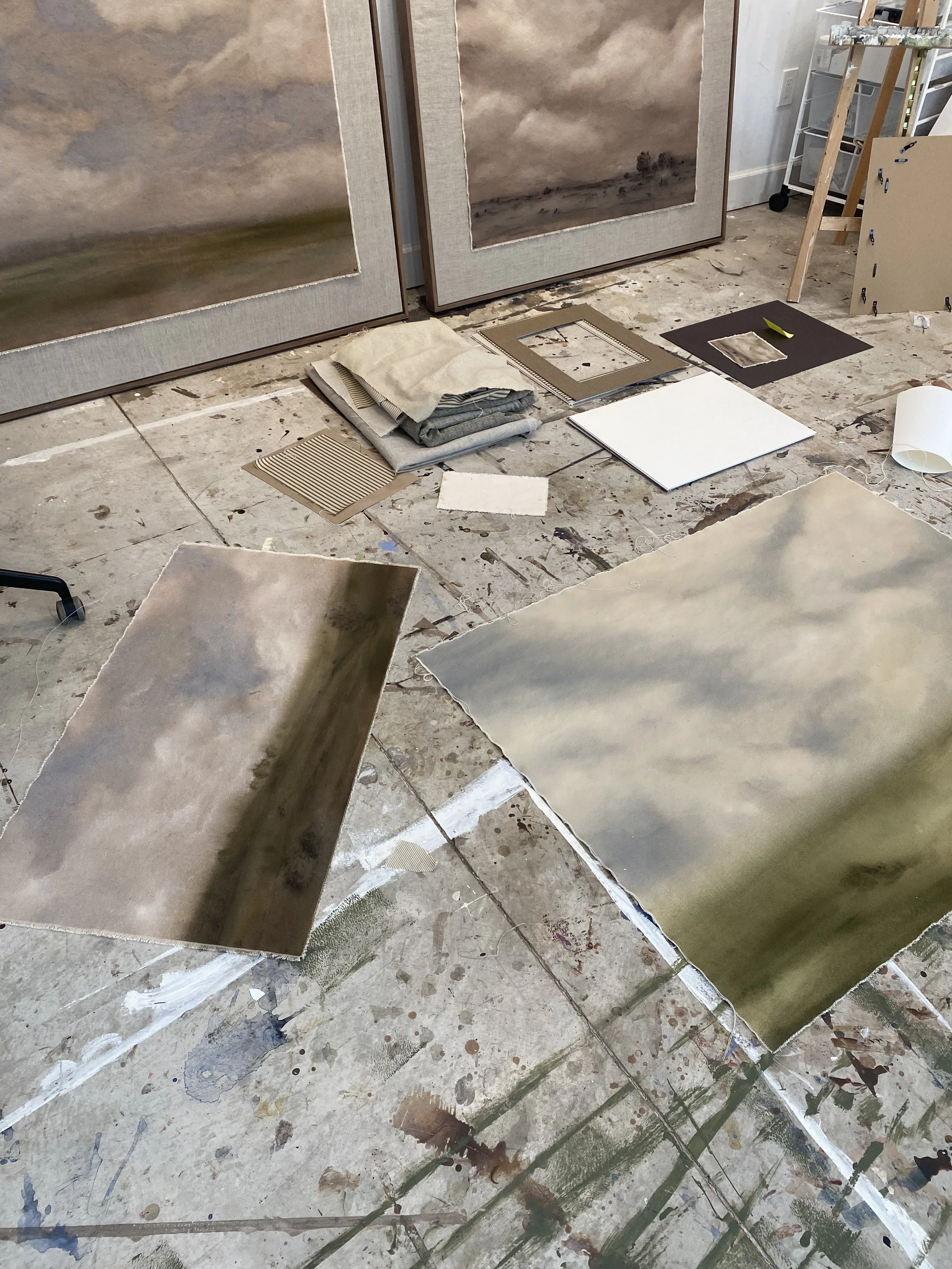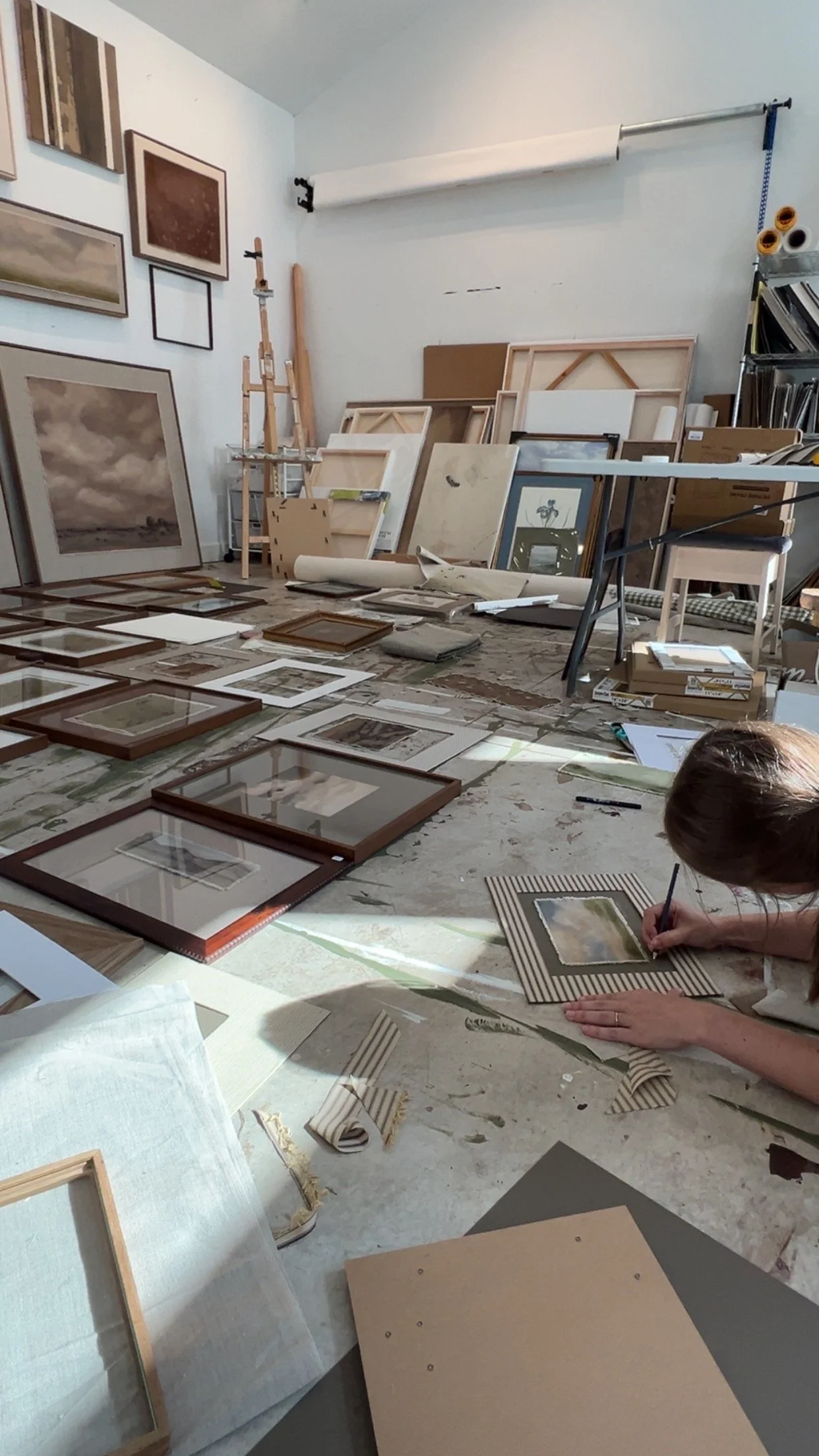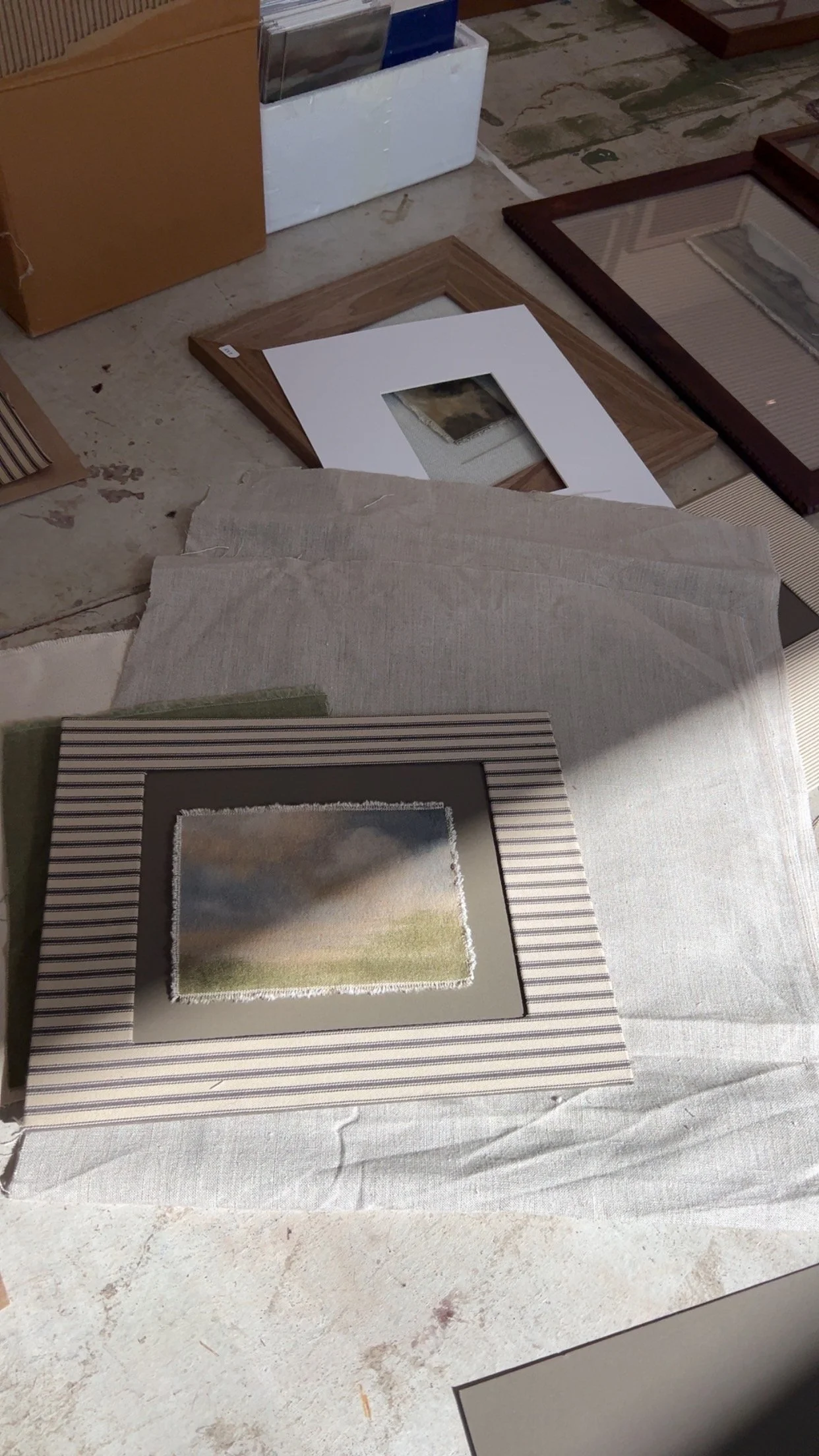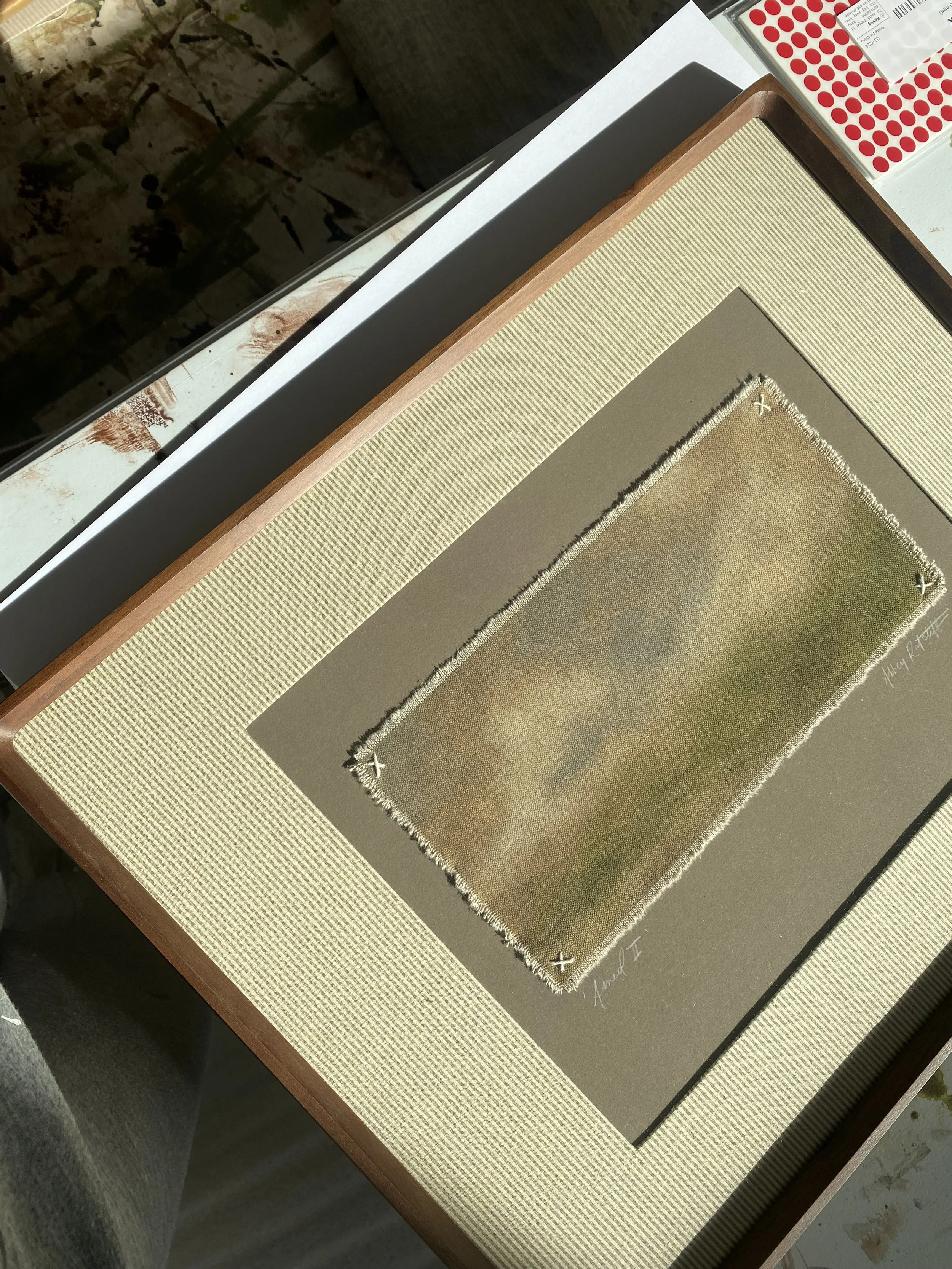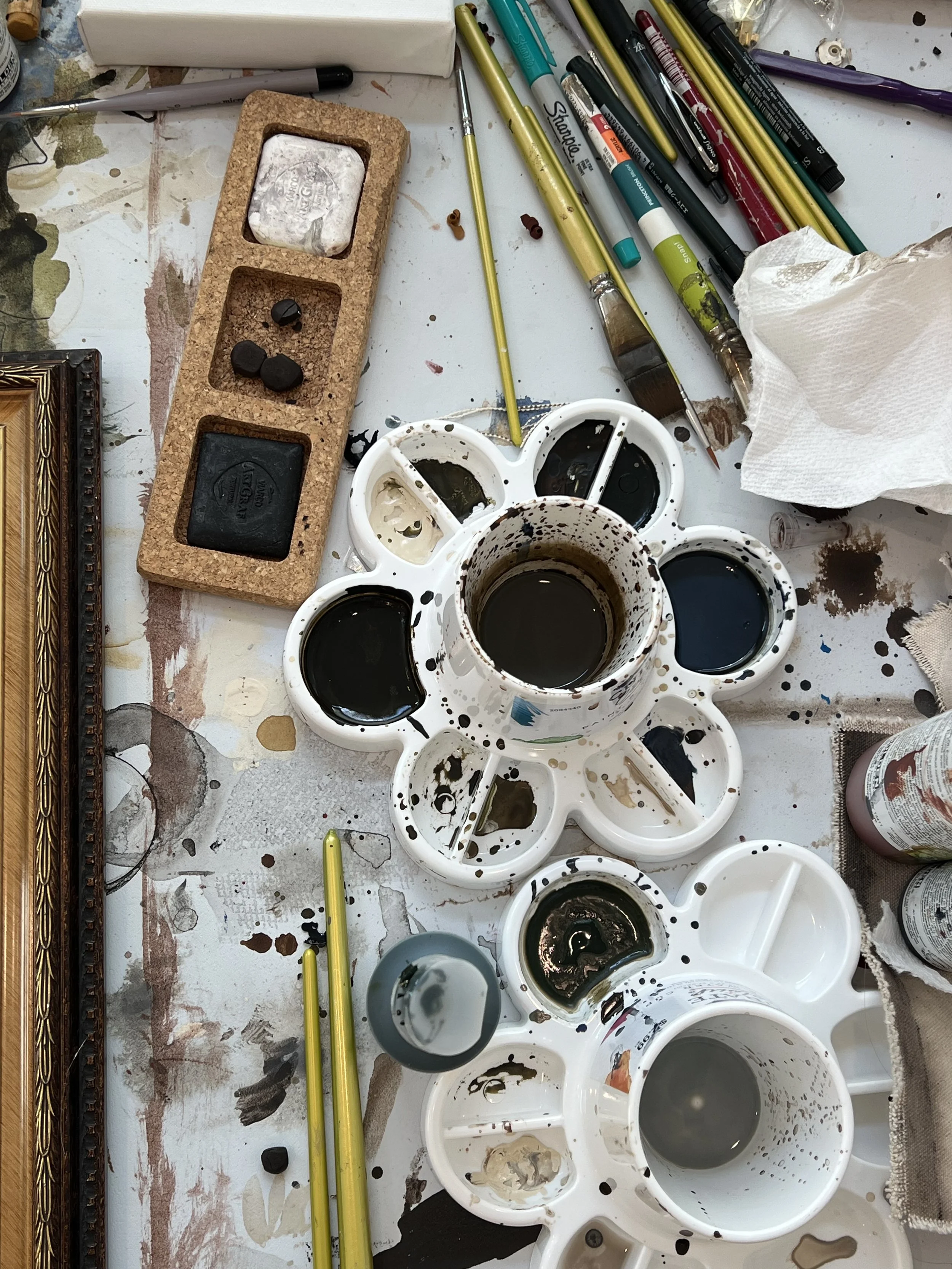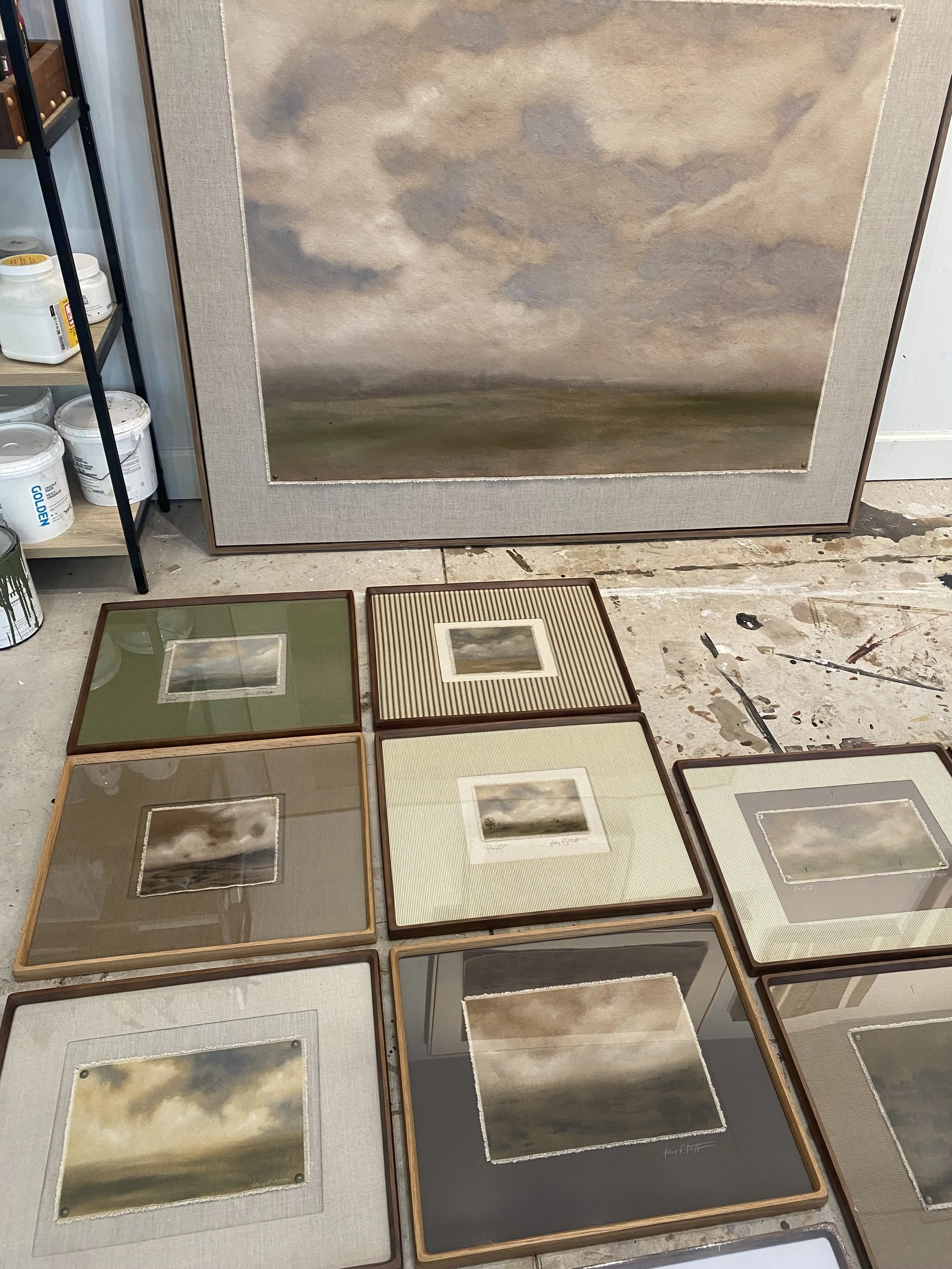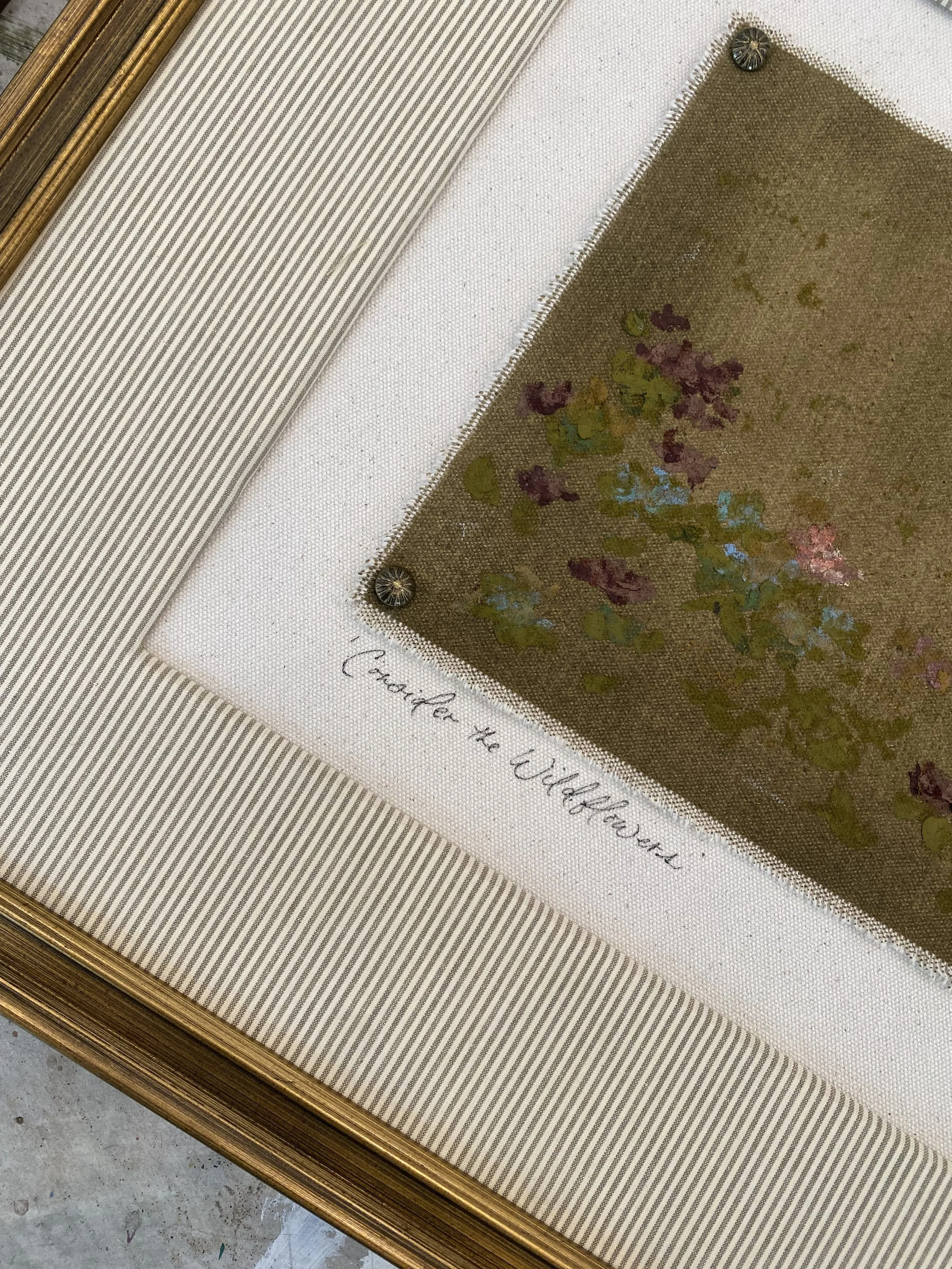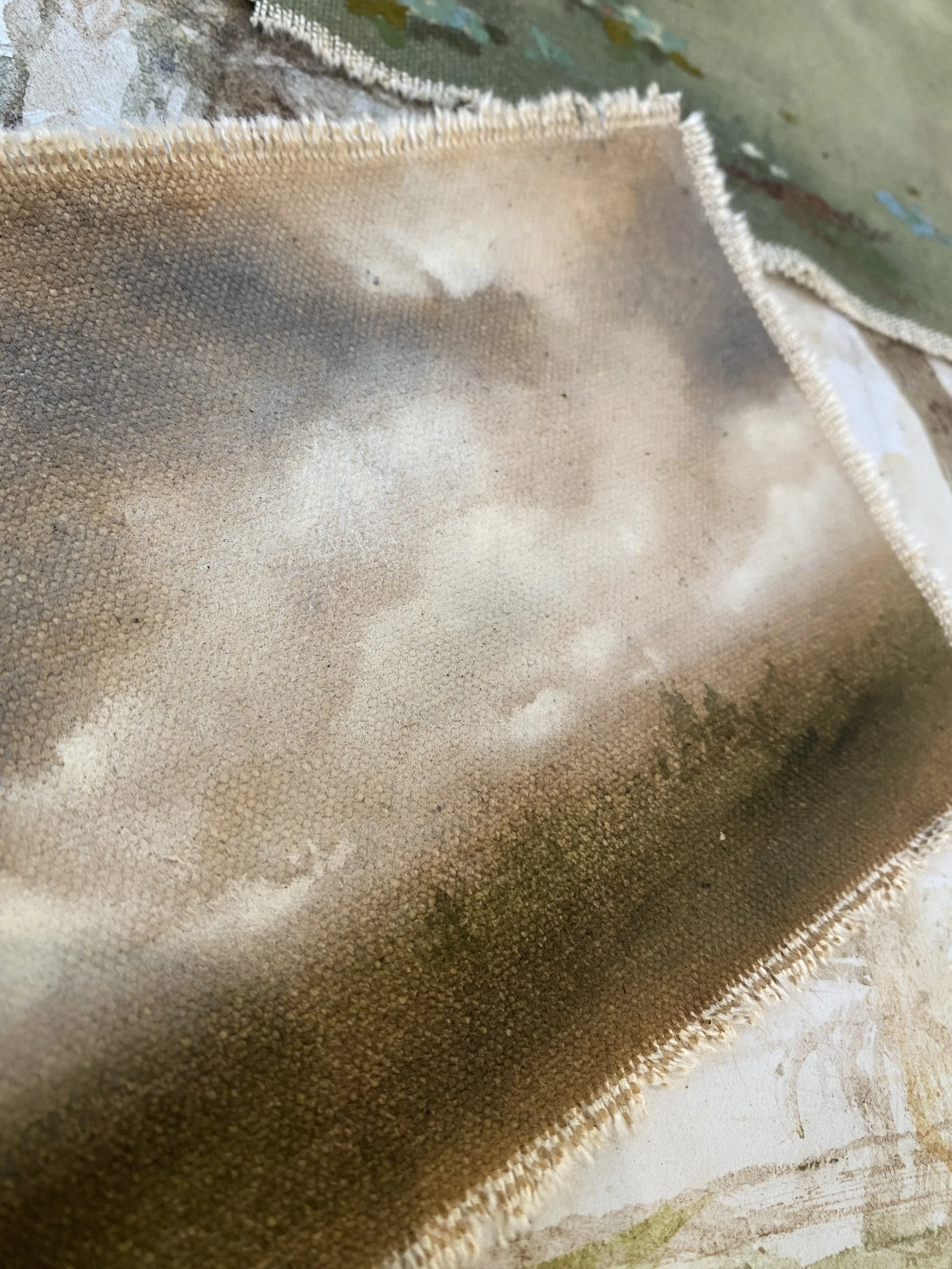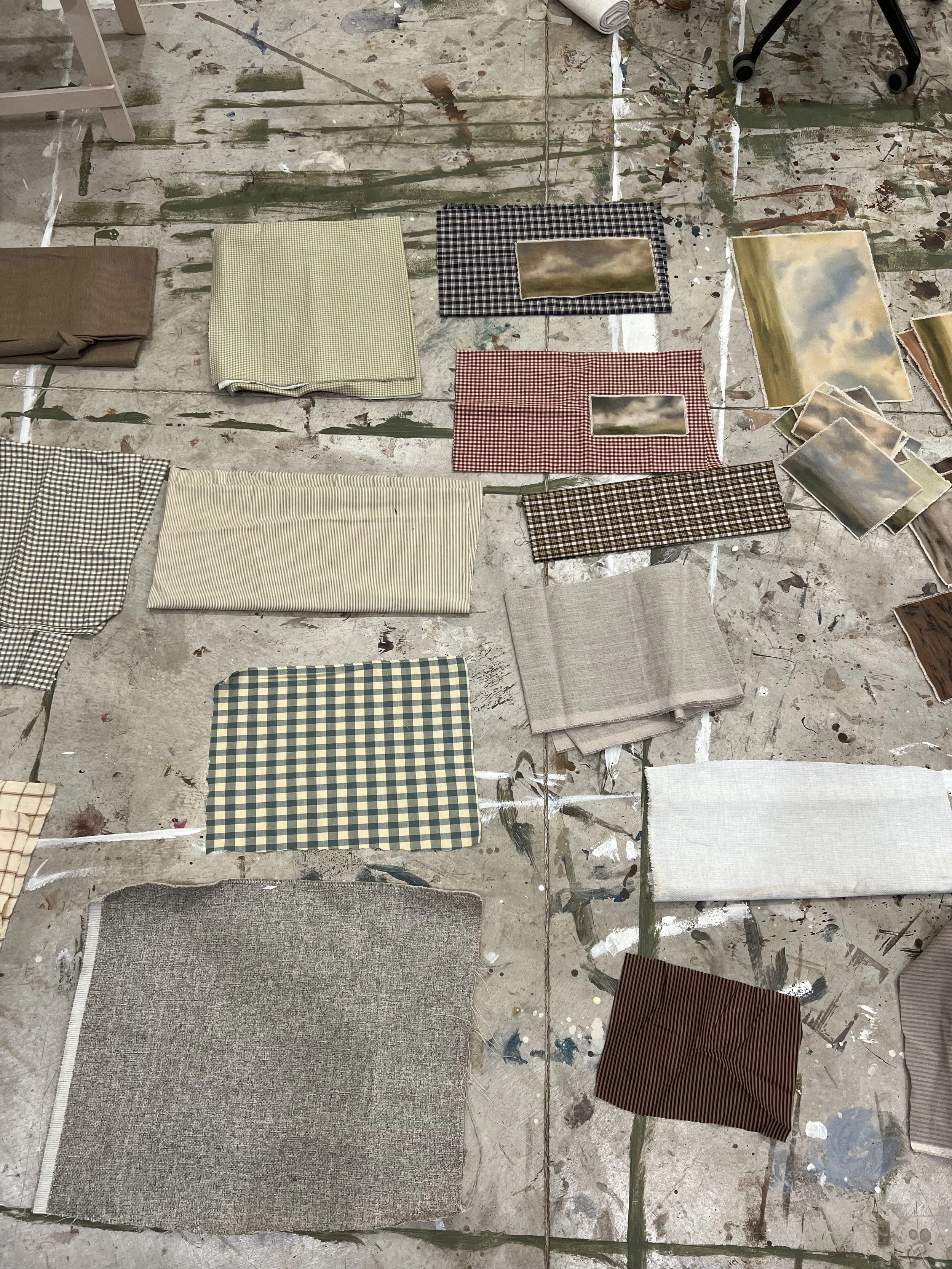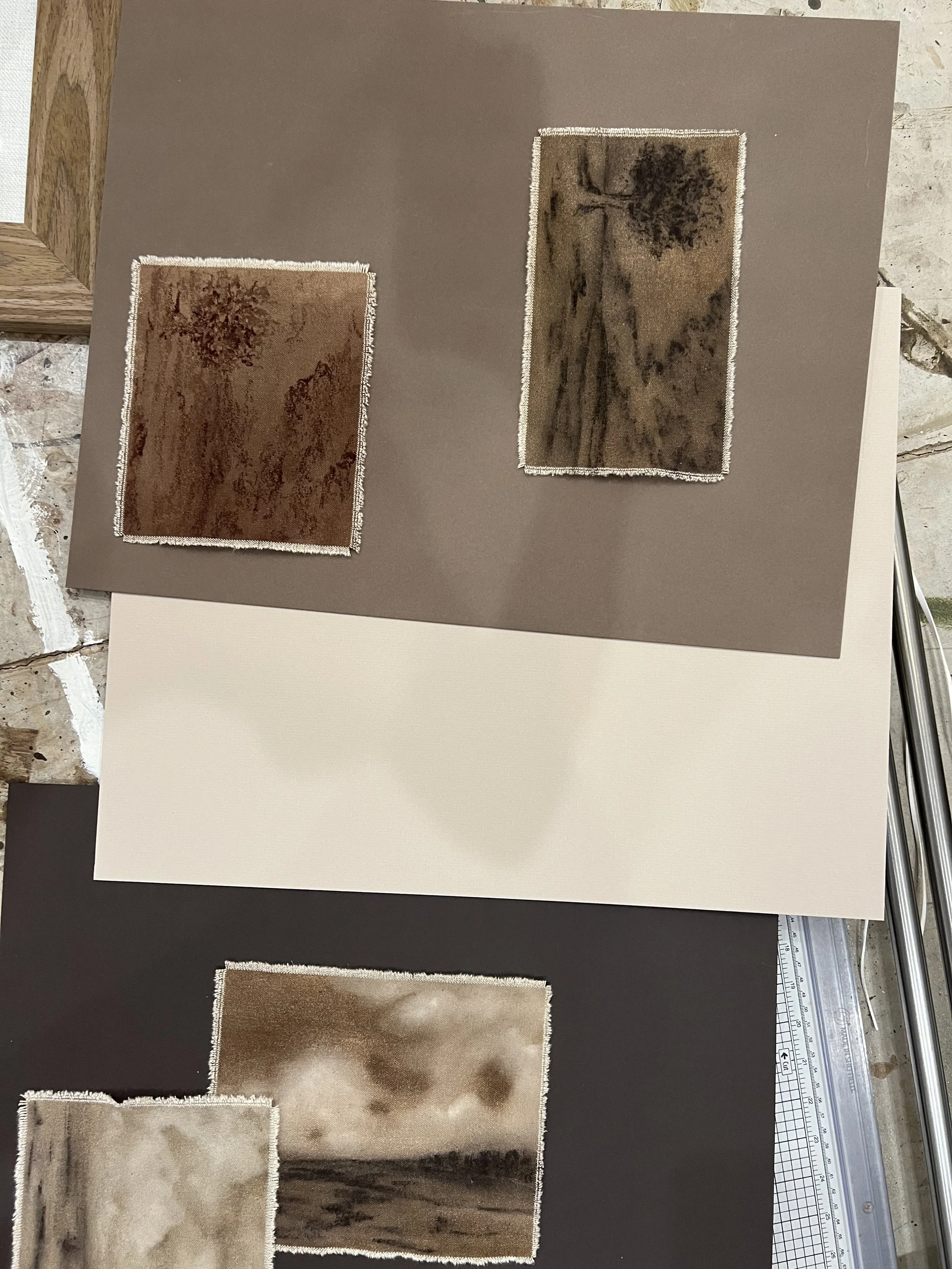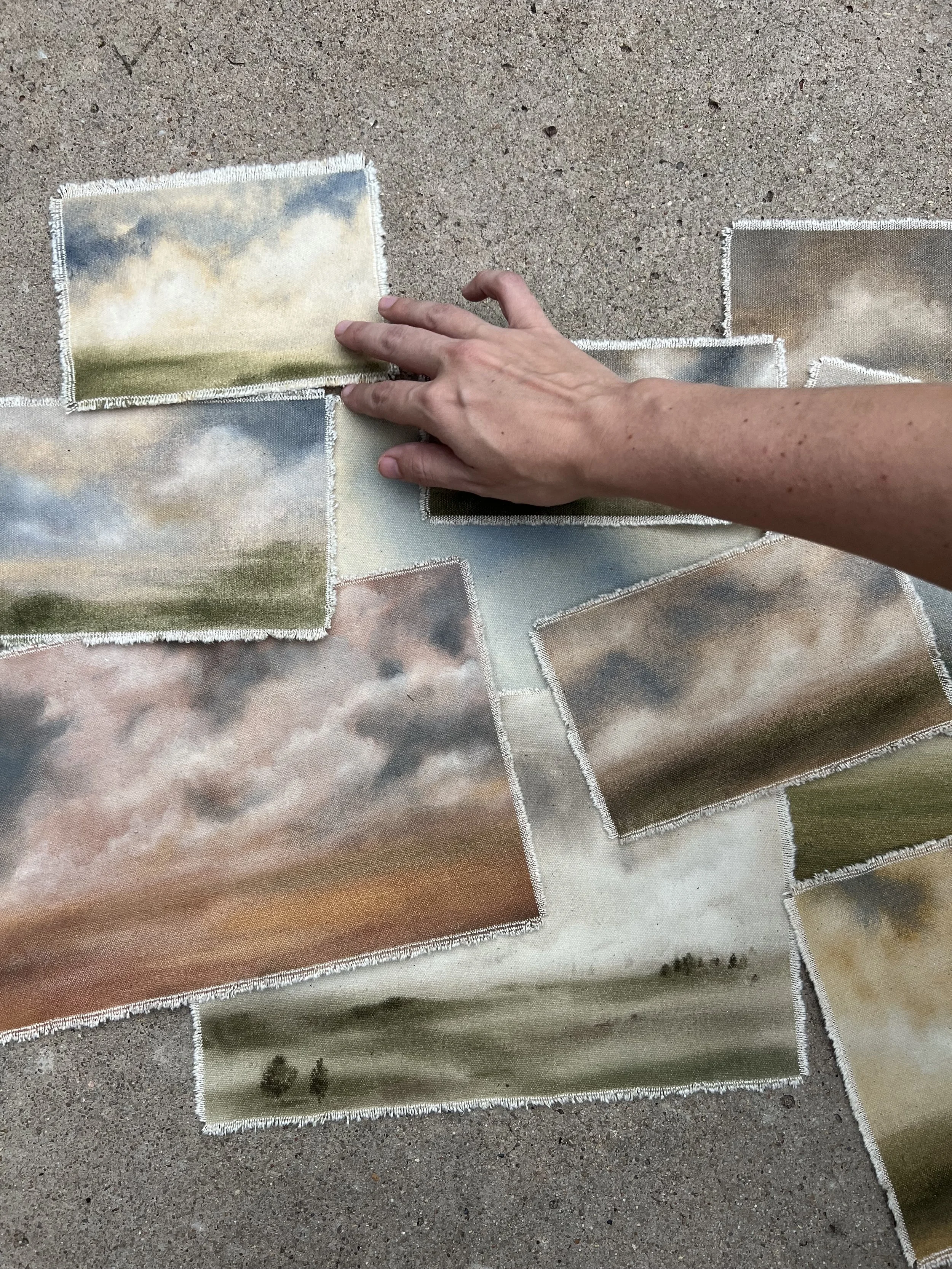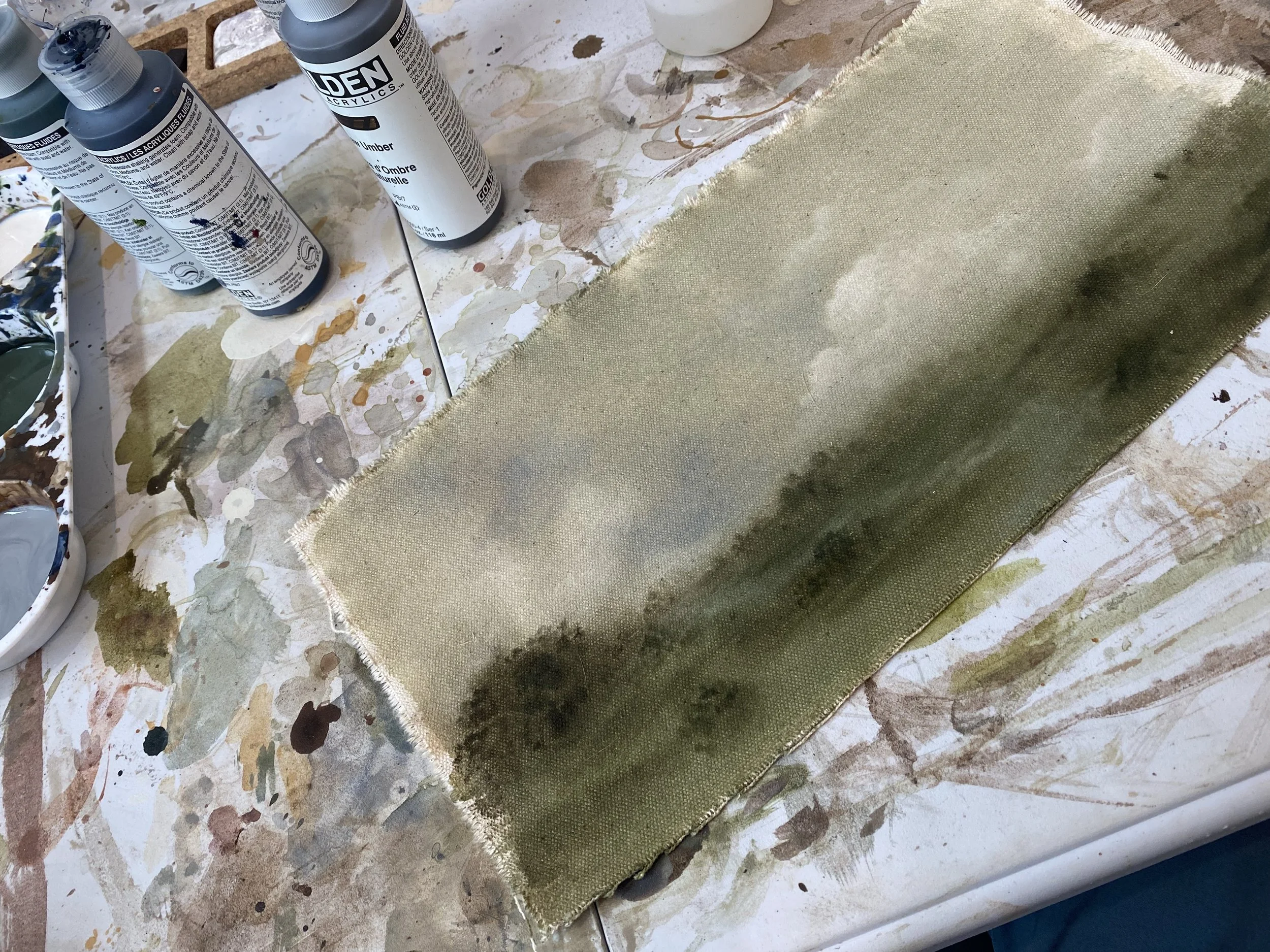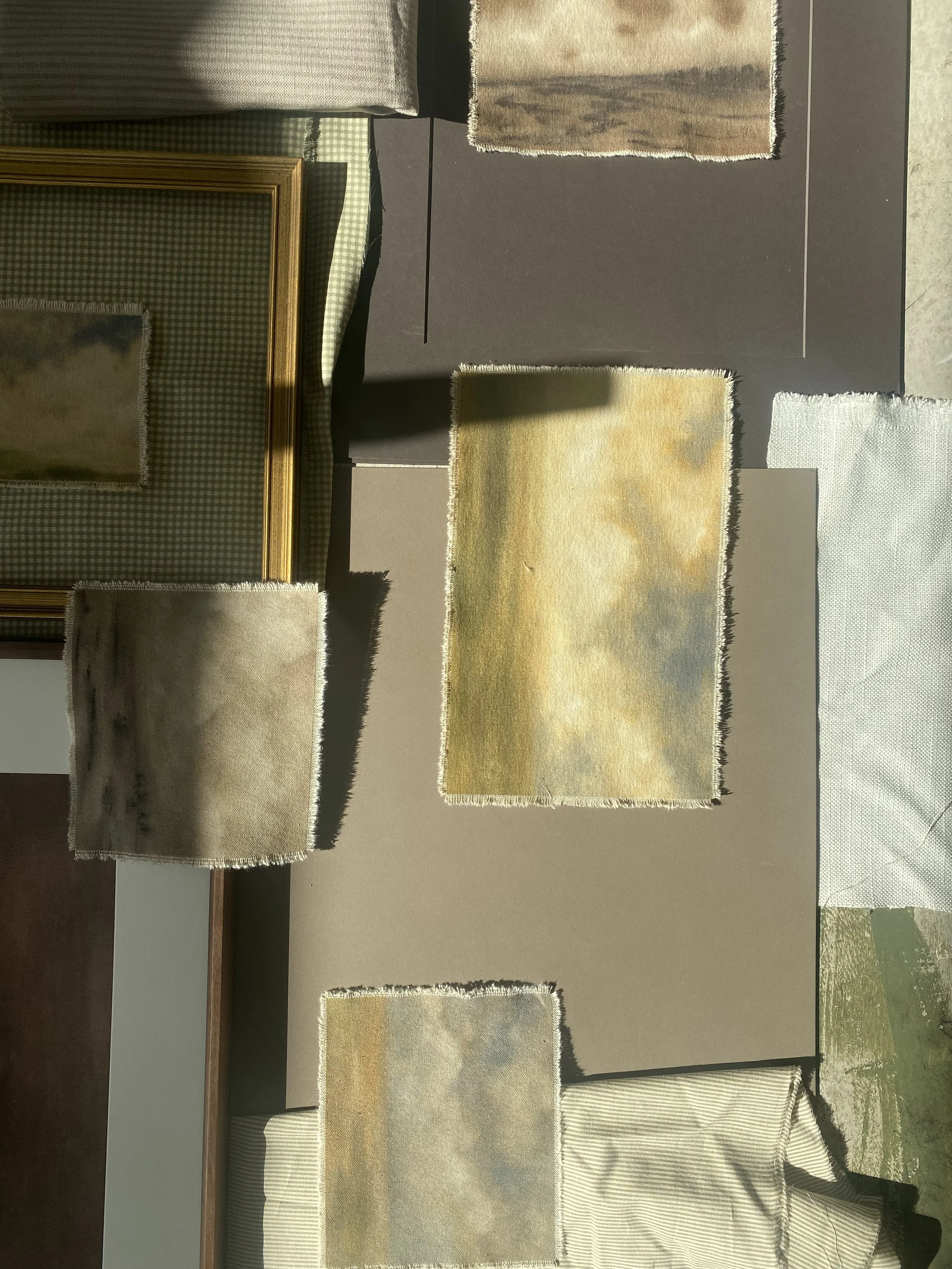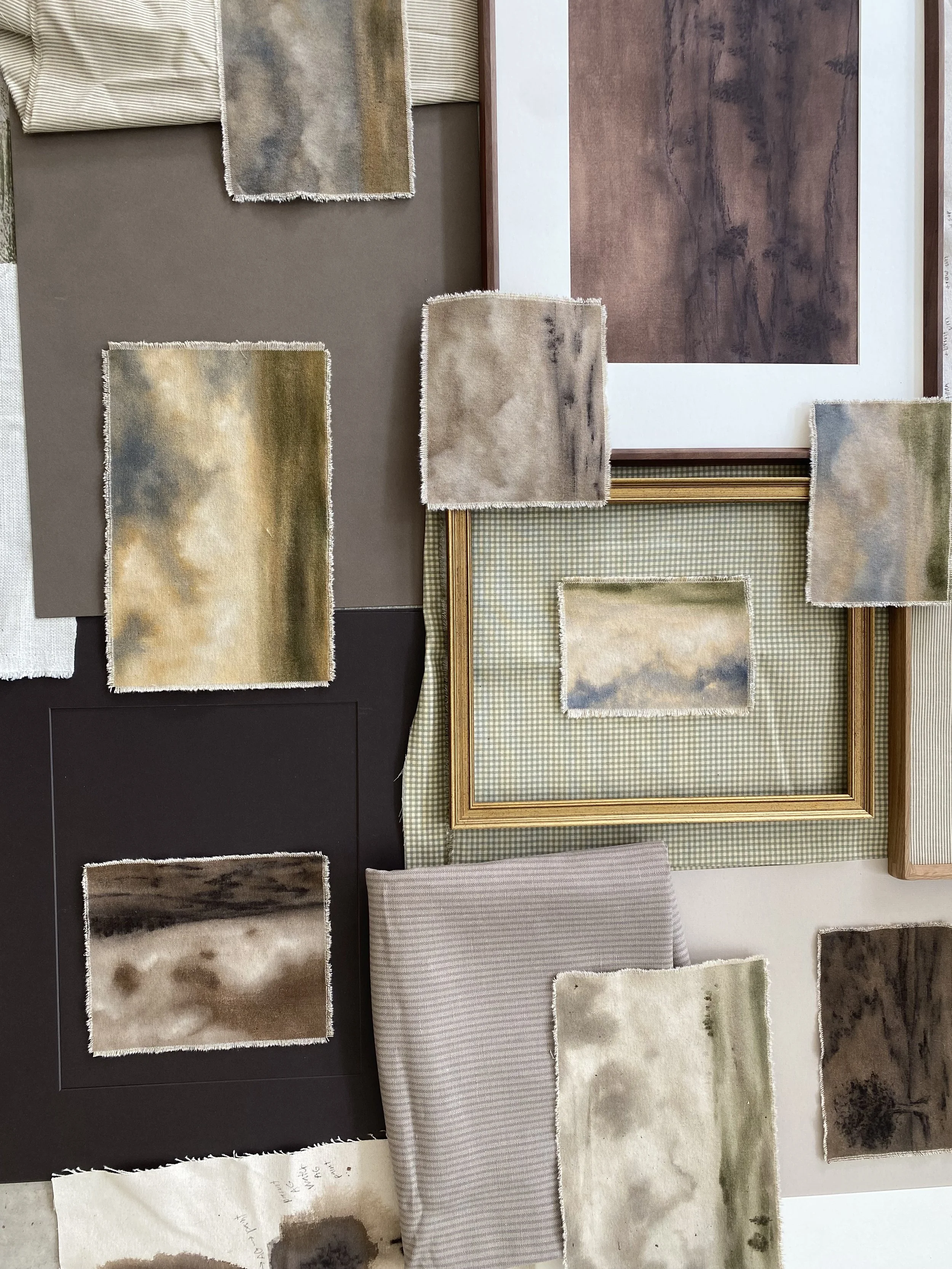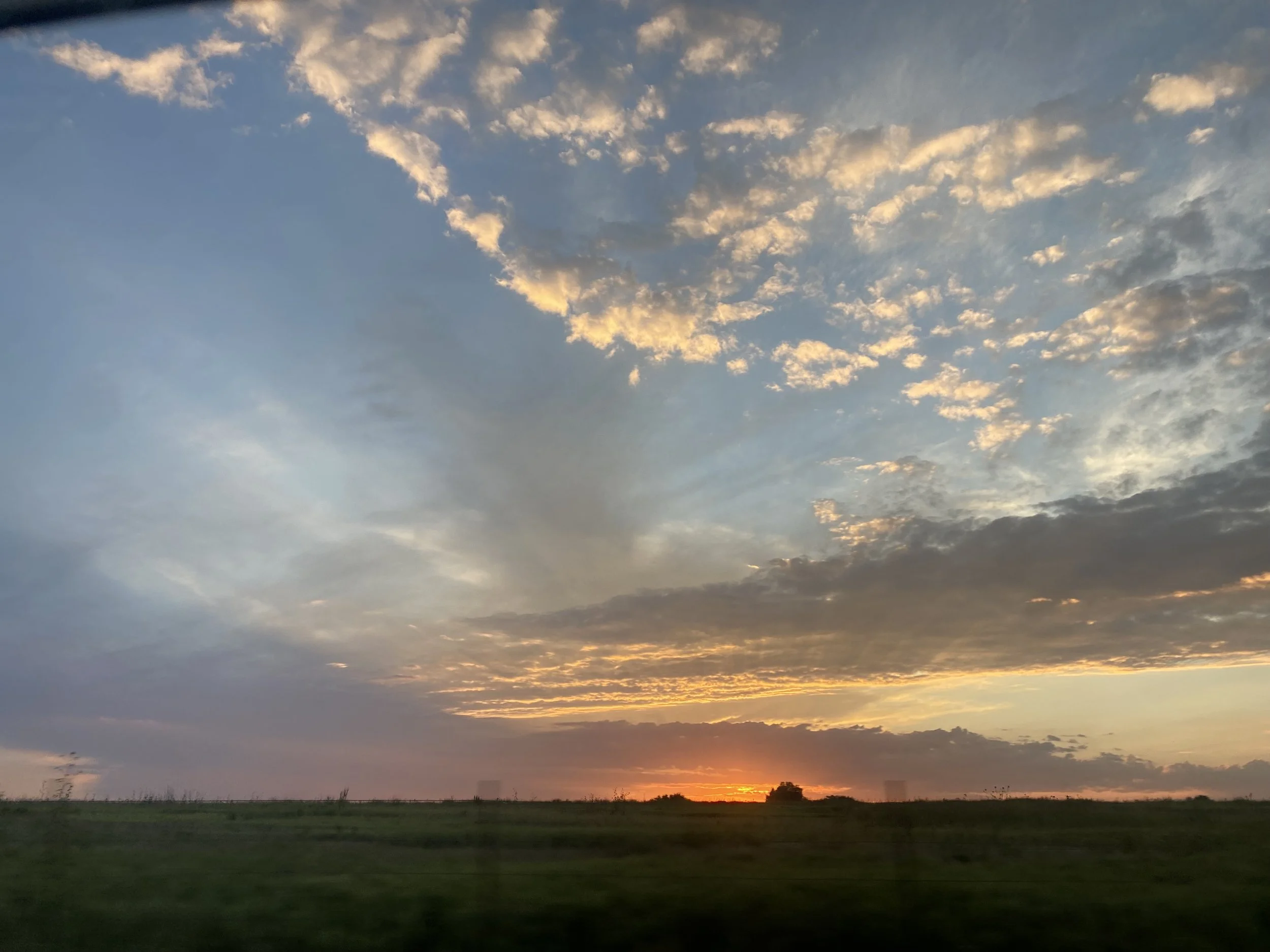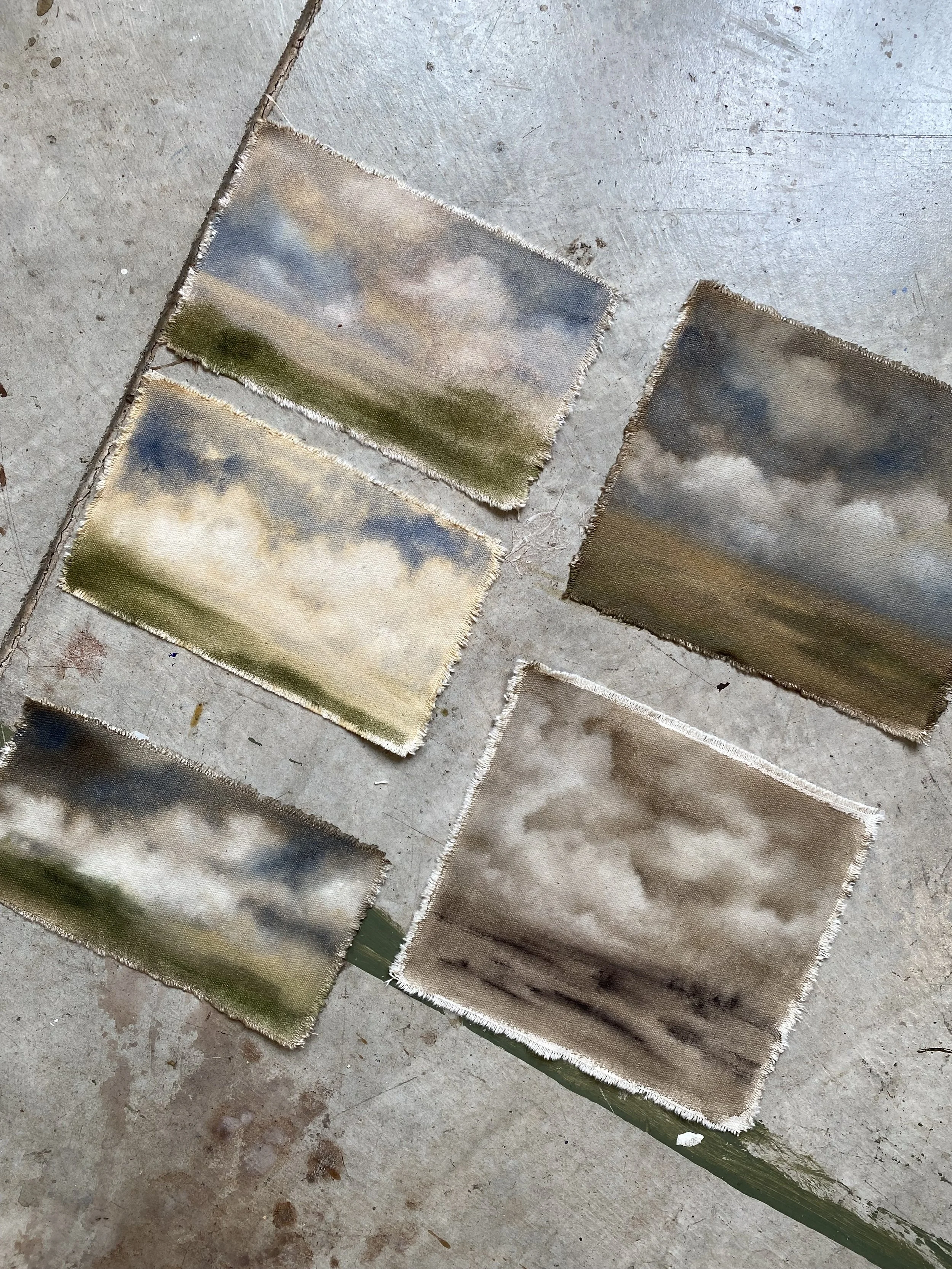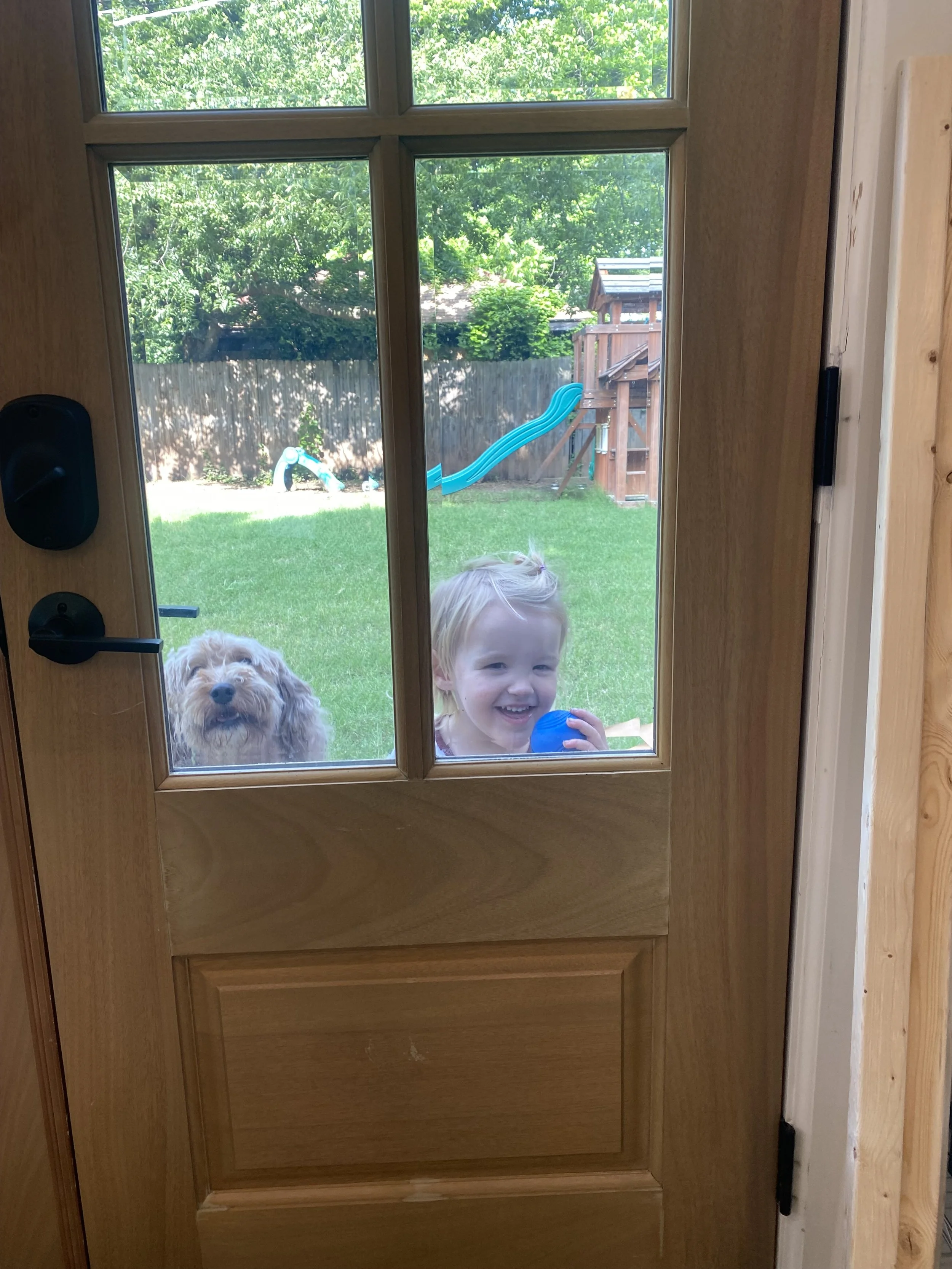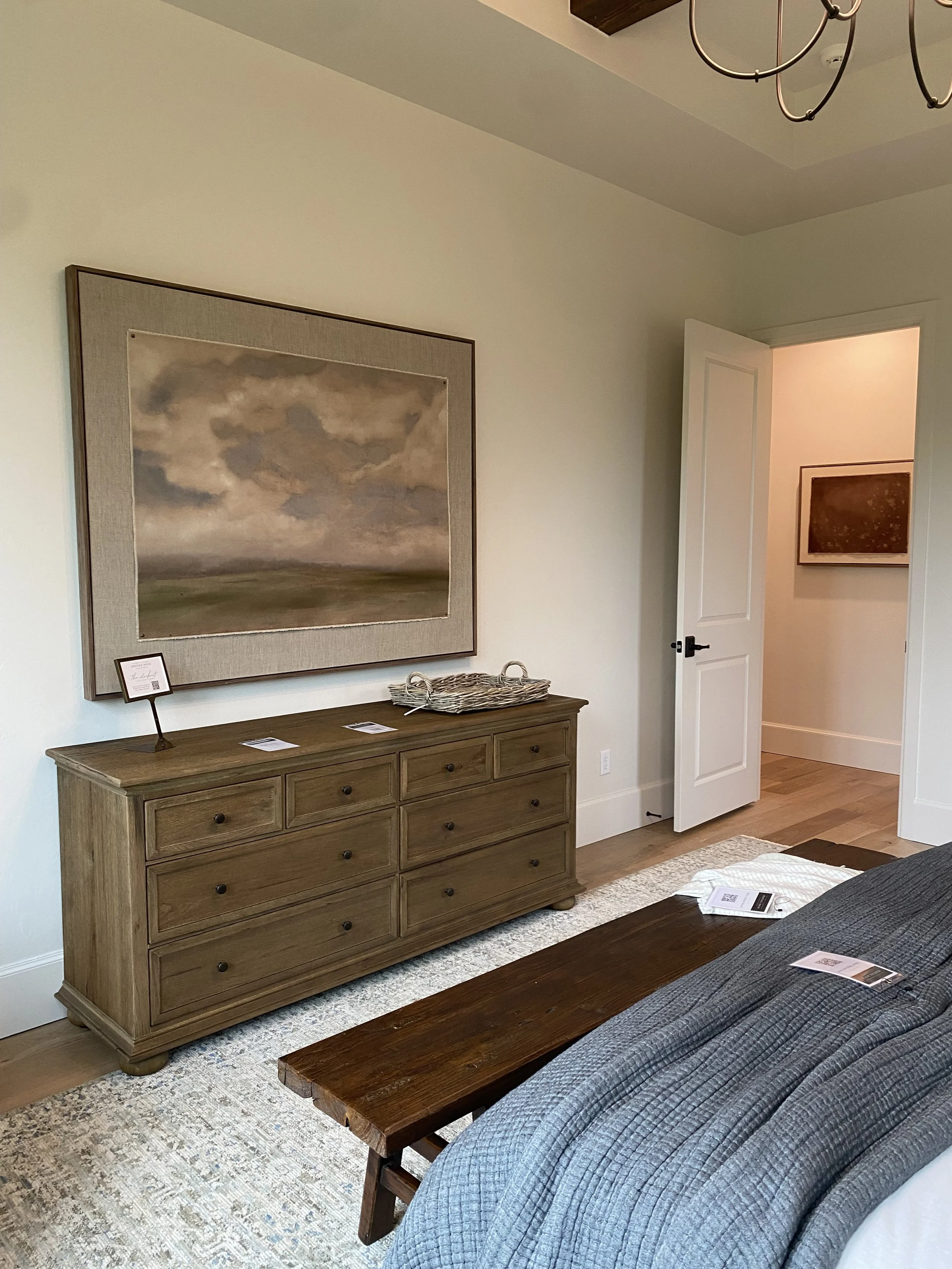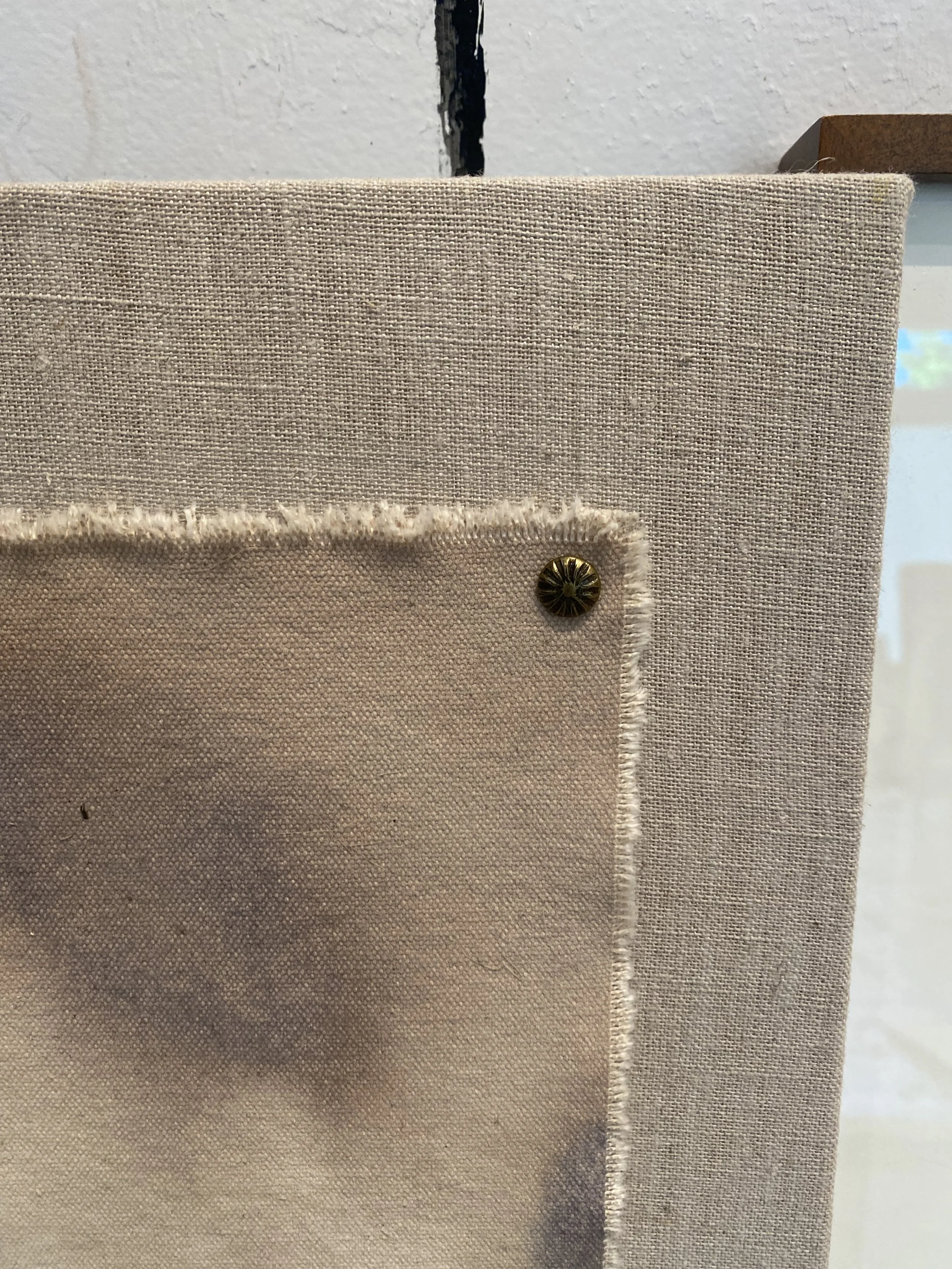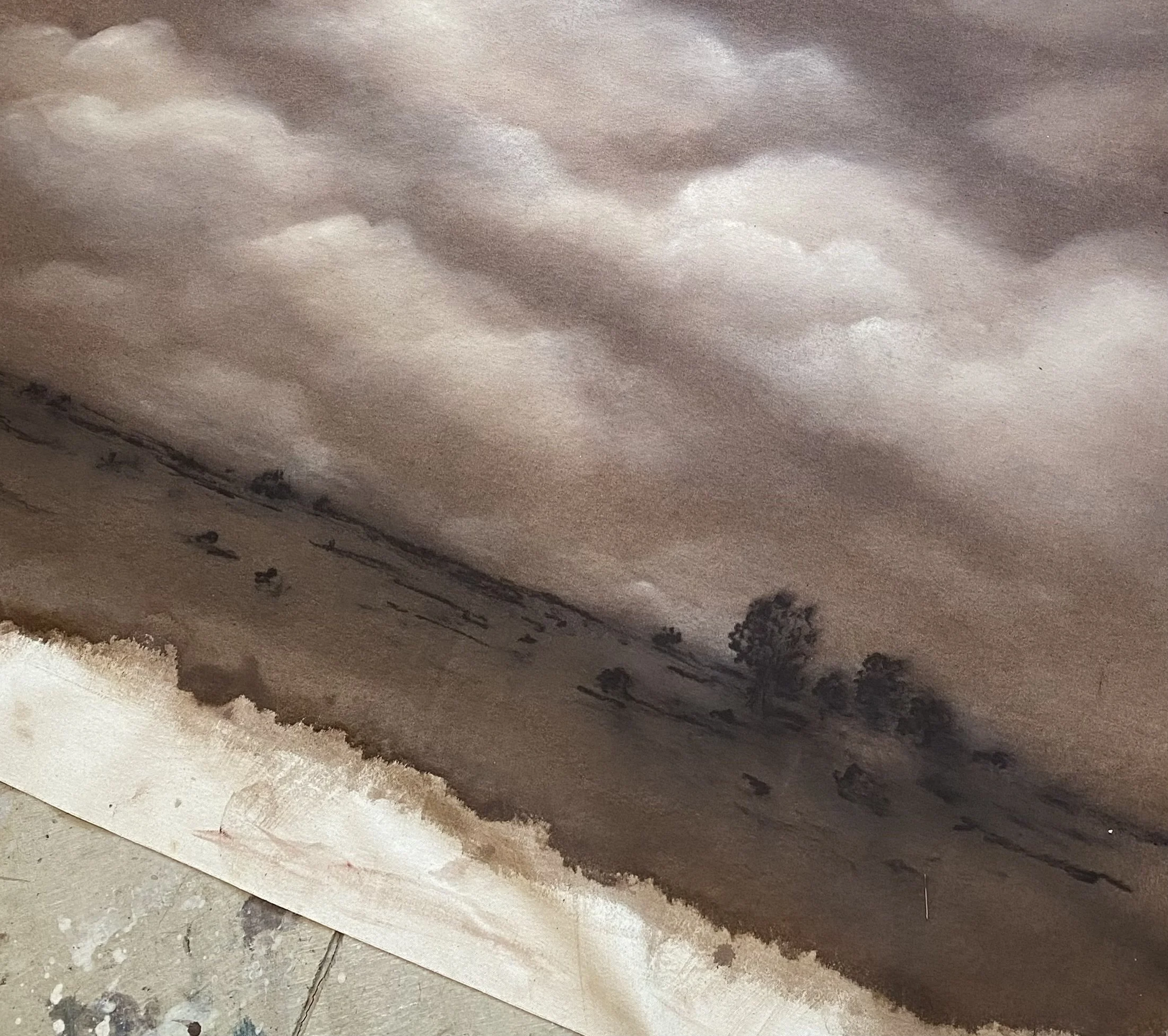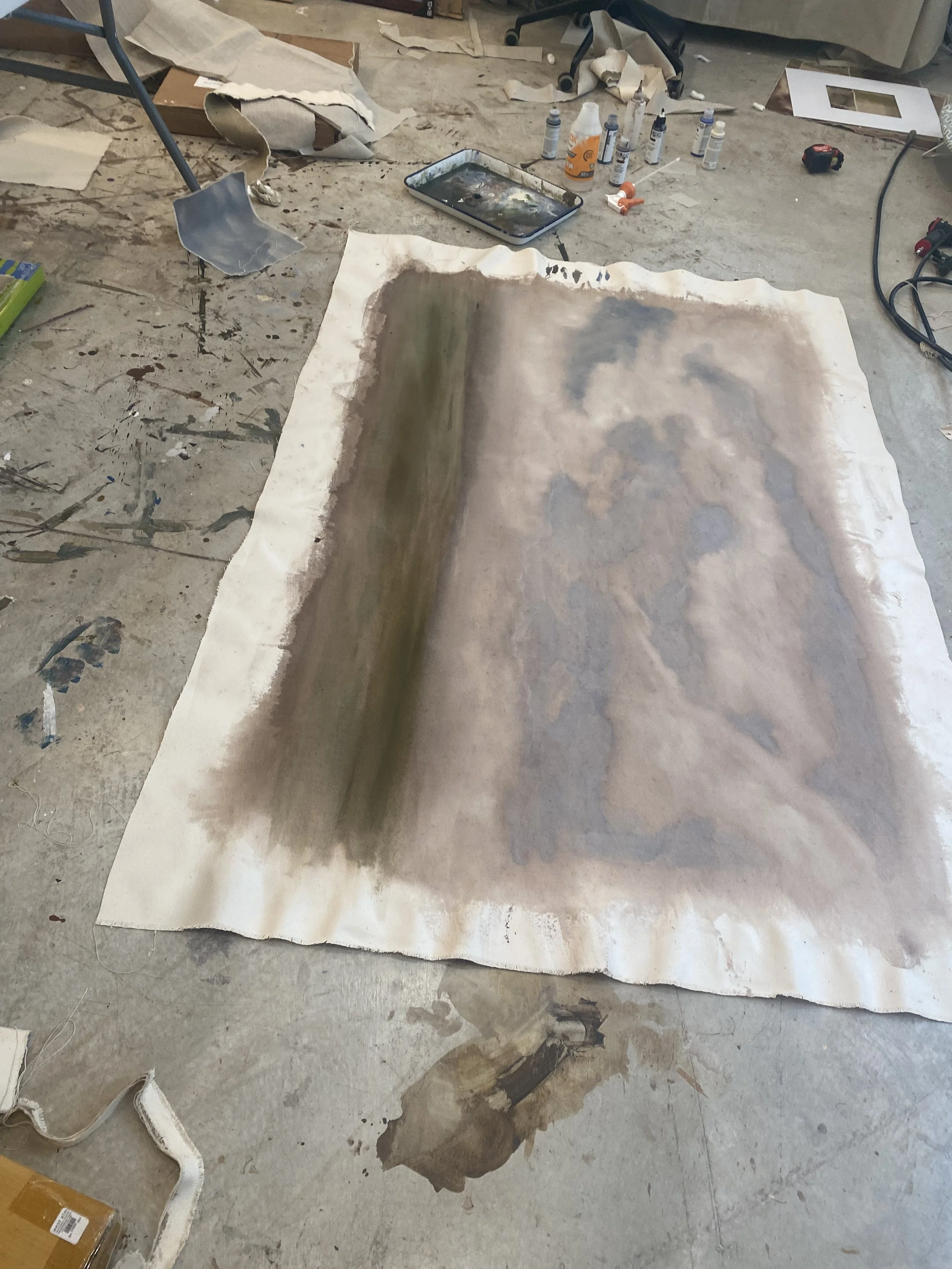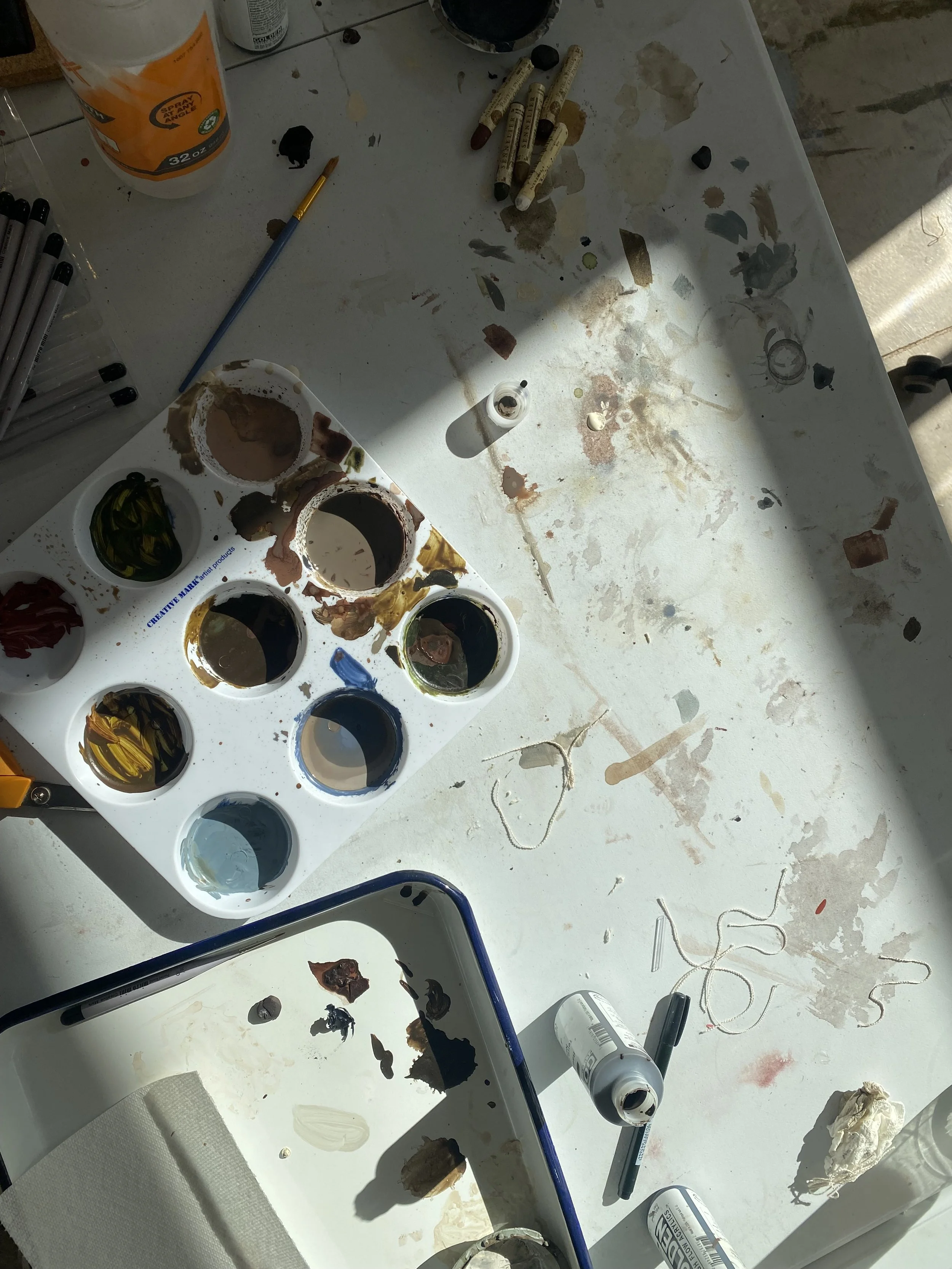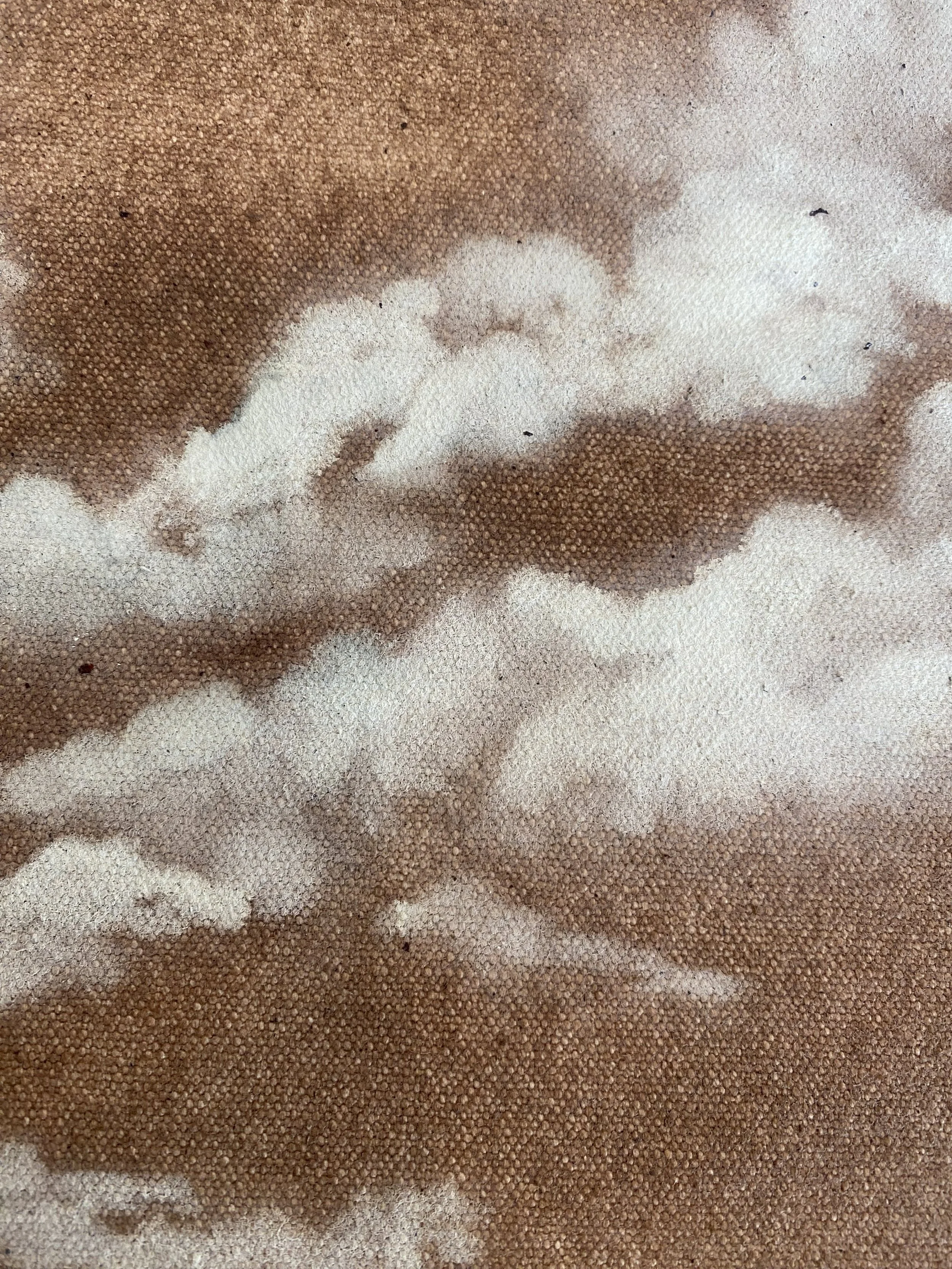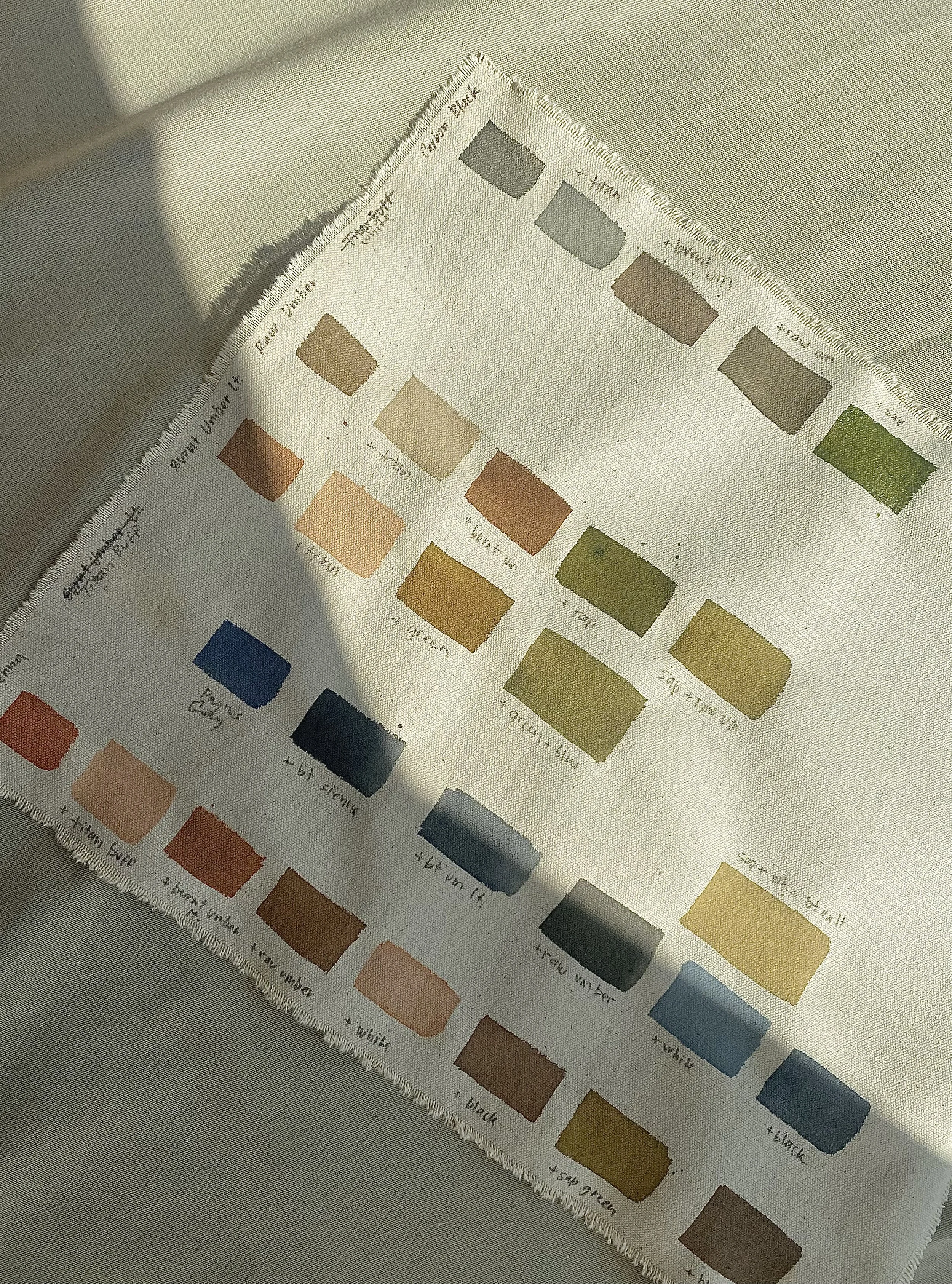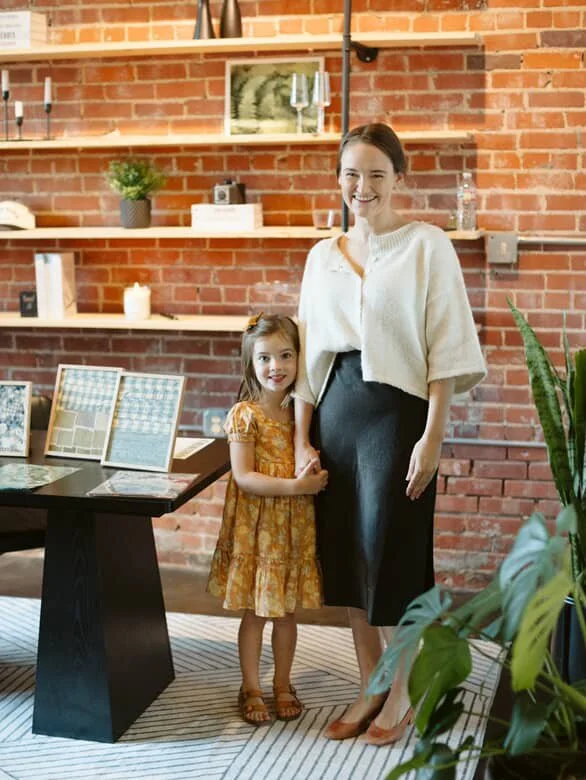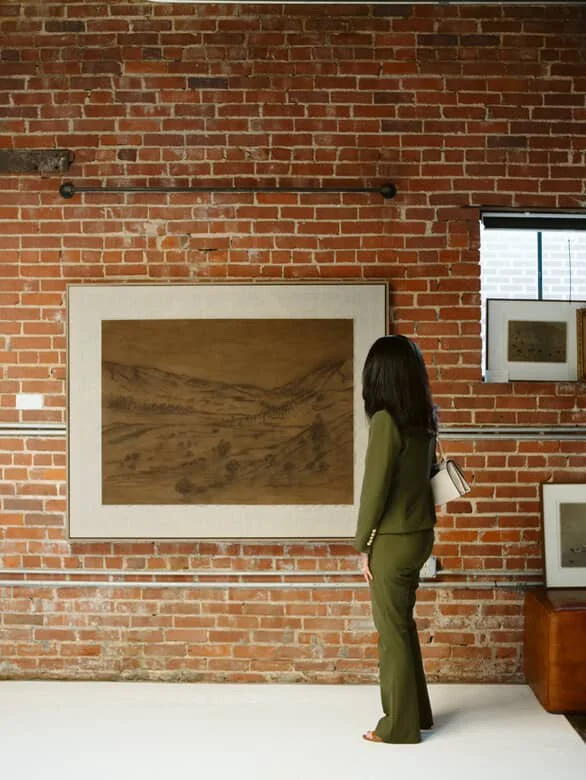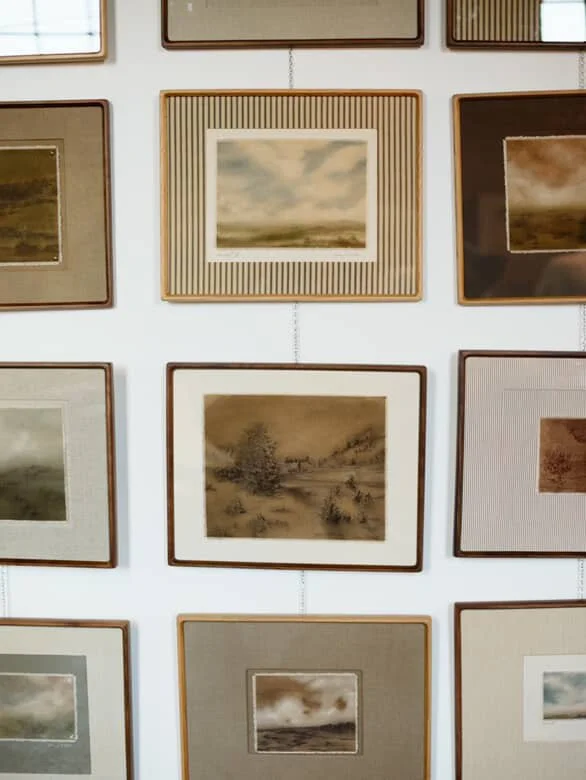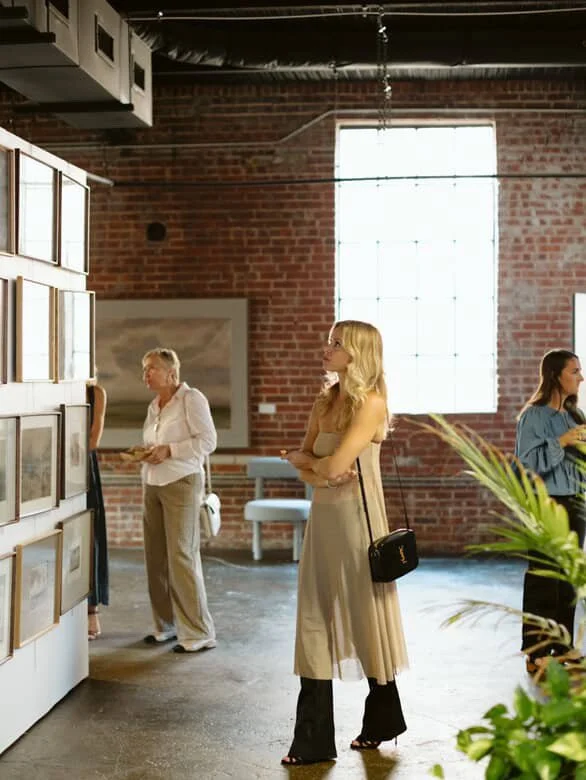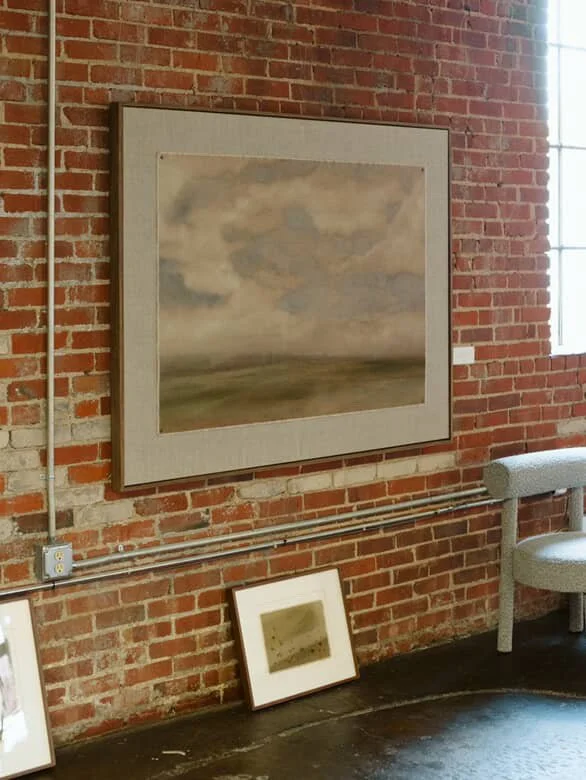
AMID, AMIDST, AMONG.
EXPLORING THE BALANCE OF TRUST & CONTROL


-
I have always been intrigued with the process of underpainting. Often done when working with oils, the underpainting is typically a thin, monochromatic layer that establishes values & tones before the ‘real’ painting begins. The underpainting is often not extremely detailed or careful, but can have such an impact on the final piece. Depending on the style of the artist, some artist even paint on top of the underpainting purposefully keeping areas of the underpainting showing through. See more in ‘THE HEART’ as to why this process spoke to my heart ;).
Knowing that I wanted to incorporate an underpainting into my work (I typically don’t), I began to experiment. It is uncommon to use an underpainting when painting on raw canvas, but I was intrigued as to how this could effect the style of work that my practice was taking me— So I painted. I used a variation of pigmentation, tested colors from raw umber to yellow ochre, & documented what was ‘working’ and what was not.
As the collection was shaping, I realized how much of this process took patience and trust. When working with raw canvas and high flow acrylics, it can be compared to the process of watercolor painting— learning when & how the paint dries, adjusting & moving the pigment in order to create the desired effect, while also trusting that you can only do so much before it begins to look over worked. I love it. It was frustrating and maddening at times, but I believe that was part of the purpose of this work. The underpainting gave form & depth, the next layer meshed with the underpainting in a combination of trust & control, the final layer was patience— waiting for the piece to dry & slowly adding details to embellish the direction that the painting had moved towards.
MEDIUMS found in this collection:
raw linen, raw canvas, high-flow acrylic paint, water-soluble graphite, charcoal
-
Throughout the process of creating AMID, AMIDST, AMONG, I wrestled with the balance of trust & control. So often, we try and control, sometimes force, every single step of our life. We create 5, 10, 20 year plans (not bad in itself), but what happens when they don’t go according to plan? Do we try and force them? Do we become anxious and overwhelmed because we aren’t ‘on time’? Do we feel heartbreak because we ‘failed’? It can run into an endless cycle of disappointment— & honestly creating lack of joy and beauty because we weren’t able to see what God was forming, we weren’t instead ‘overworking’ a piece of art that had meant to go in a different direction. A really beautiful work of art.
Alright, so here’s my painting metaphor—
I begin a piece. I prep my raw canvas and begin the underpainting. The monochromatic underpainting is taking shape— it’s thin and begins to create areas of deeper tones & different values. I allow them to form (trust) as I begin the next layer— this time a bit more pigmented and no longer monochromatic. The underpainting is peeking through and is mixing with my acrylic paint. I allow the variation of underpainting + acrylic mixtures to create depth due to the different values being created. I could have chosen to freak out and quickly mix it all together in fear that the underpainting was ‘not supposed to combine with the acrylics for that cloud’’ however, choosing trust allowed the cloud to form just as it should. Where there was more underpainting pigment, it allowed the shadows of the cloud to be formed & where there was the opposite, it created highlights. There was control in the fact that I placed pigments on certain areas of the canvas, I shifted and moved them strategically, but I also trusted as they formed. I allowed my fear of control to be relinquished in order for the work of art to be shaped into beauty. I then was able to add the final layer— embellishing the highlights and shadows where they had already begun to form. See where I’m going? I know I’m rambling, but I hope you see it ;) Ready more about the takeaway in THE HOPE below.
& exciting news! My sister & published author, Samantha Decker (yes, I’m 100% bragging — find her book here!), wrote an article about how the Lord has used this collection to teach me & where in scripture these truths come from. I’m so excited to share it with you! See & Read ‘Learning to Look Deeper’ below.
-
My hope is this: that you find joy in relinquishing control and letting God paint your story.
I’m not encouraging passivity or ignorance, but trust— Trust in His timing, Trust in His direction, Trust in His painting. He is, however, the very best Artist.
Also— my hope is that if you collect a piece from Amid, Amidst, Among, you find beauty in the art alone, but also in the process. Allow it to be a conversation piece, a source of joy, & a reminder to Trust in the Lord.
LEARNING TO LOOK DEEPER
What the Creative Process Reveals about Spiritual Formation
SAMANTHA DECKER, AUTHOR OF UNHURRIED (& SISTER TO ABBEY)
Art has the ability to move us. We can look at a painting and experience something deeper. Hear a song and respond with tears. Read a book and feel seen and known.
But great art doesn’t just move us for the sake of evoking an emotional response; instead, it moves us to deeper understanding. It makes us ask questions and seek answers.
As I listened to my sister describe her process of taking a raw canvas and turning it into a beautiful, complex painting, questions began to circle my mind and fill our conversation. Questions like:
How do we balance trust and control, work and waiting, faith and assurance? How do we live in the tension of what is and what should be? What is the result of living open-handed?
These questions weren’t just about the art, though. They reflect the same questions that undergird a life of faith.
Scripture is full of metaphors and analogies written to help us move into a deeper understanding of who God is and who we are. For example, over and over, we see God as Sovereign Creator. The Bible tells us that He is the potter, we are the clay (Isaiah 64:8). He is the Designer, we are His handiwork (Ephesians 2:10). He is the Builder, we are the stones (1 Peter 2:5).
In every case, the process and the product reveal the heart of the Creator. Because of this, when I look at my sister’s art, here’s what I see:
A Foundation that Matters
Often, some of the most important components of a painting are never actually seen.
My sister explained that oftentimes, if an artist wants to create depth and tone, they start with an underpainting. This is the layer that may or may not be seen. It’s painted for the purpose of building upon. Without it, a painting may lack texture, richness, and clarity. The foundation matters.
In Matthew 7:24-25, Jesus offers a similar reminder:
“Everyone then who hears these words of mine and does them will be like a wise man who built his house on the rock. And the rain fell, and the floods came, and the winds blew and beat on that house, but it did not fall, because it had been founded on the rock.”
Our faith in the good news of Jesus Christ is the only firm foundation. Then, as we obey His words, we begin to build in both seen and unseen ways.
The Balance of Working and Waiting
In both life and art, building presents its own struggle.
As I talked with my sister, she described a process wrought with tension. For some artists, painting on an underpainting means some areas will still be wet while others will be dry. An artist must work to combine pigments at just the right time to get the desired effect. Sometimes this means waiting. And other times, this means working quickly, hoping the pigment moves in just the right way.
An artist must learn when to work and when to wait. Often, an element only becomes what it was designed to be after the pigment has had time to fully form.
In James 5:7-8, we read of yet another metaphor describing the tension we feel:
“Be patient, therefore, brothers, until the coming of the Lord. See how the farmer waits for the precious fruit of the earth, being patient about it, until it receives the early and the late rains. You also, be patient. Establish your hearts, for the coming of the Lord is at hand.”
Like artists, farmers must learn when to work the land and when to wait for rain.
When it comes to living as followers of Jesus, we have a job to do. We are to go and make disciples (Matthew 28:18-20), knowing we aren’t guaranteed tomorrow. But we also know it’s God alone who gives the growth (1 Corinthians 3:5-9). We work and we wait faithfully, living in the tension of what is and what could be.
Trust in the Finished Work
Every finished work reveals an artist who knew when to be done.
This doesn’t mean a piece is perfect, but it does mean it’s complete. Sometimes, a piece takes on a new or unexpected direction as an artist encounters obstacles. Other times, new elements are introduced while others are taken away. It’s a picture of trusting the process, knowing an artist works diligently, and yet can’t fully force their will upon the piece.
Ultimately, the piece becomes what it was created to be.
Proverbs 16:9 tells us,
“The heart of man plans his way, but the Lord establishes his steps.”
Like an artist who sets out to paint one thing, and ends up painting another, sometimes we plan our ways while God in His sovereignty has better plans. It’s the picture of surrendering our control and desires, knowing His purposes are better. Our steps are sure when walking on the Firm Foundation. His saving work is finished, and we can rest securely in Him.
Yes, art moves us, but it also calls us deeper. It invites us to see differently, to ask better questions, to pause and remember. It draws our eyes not just outward, but upward to something greater. It encourages us to build upon the firm foundation and live faithfully in the tension until our work is done.
Ultimately, art reveals our Creator’s heart, and so today, I’ll choose to look deeper.

BEHIND THE SCENES



